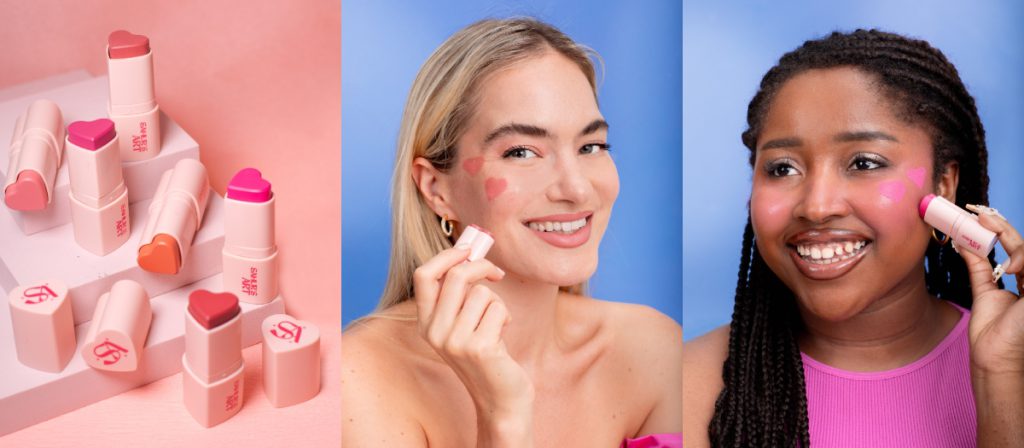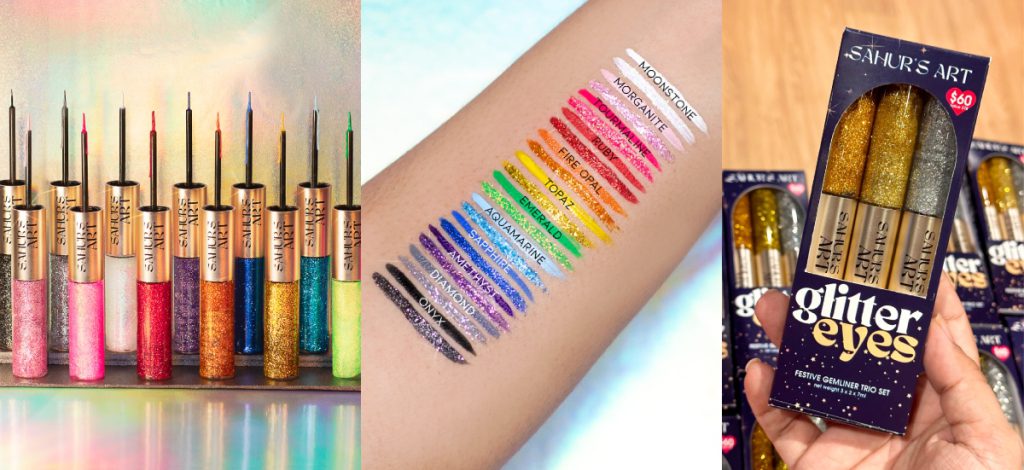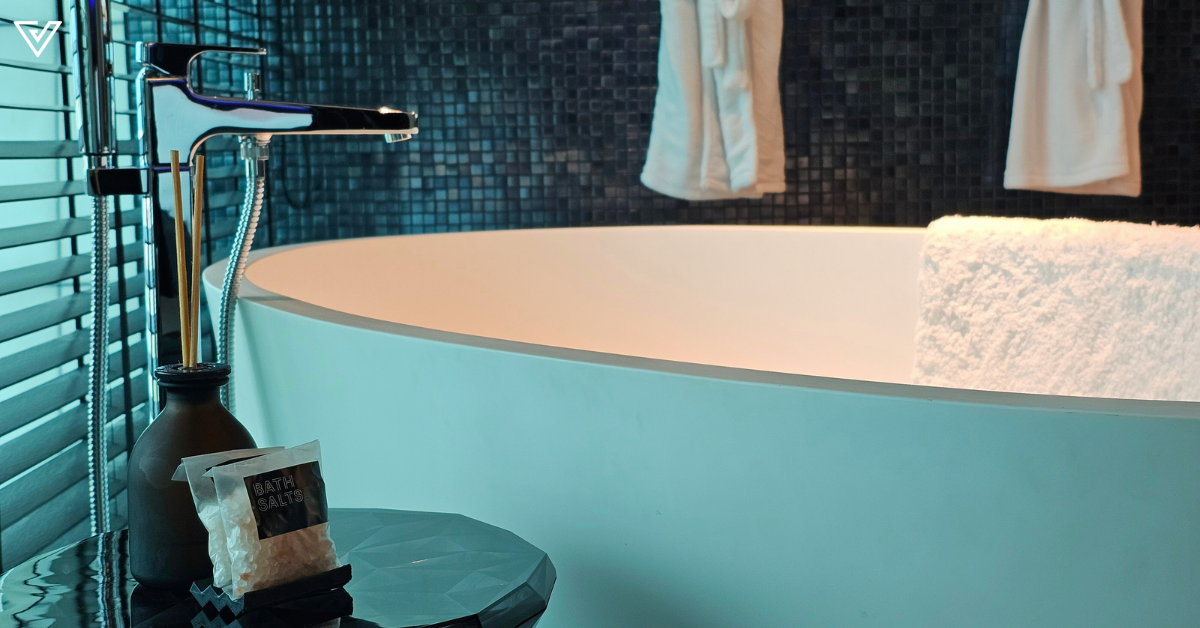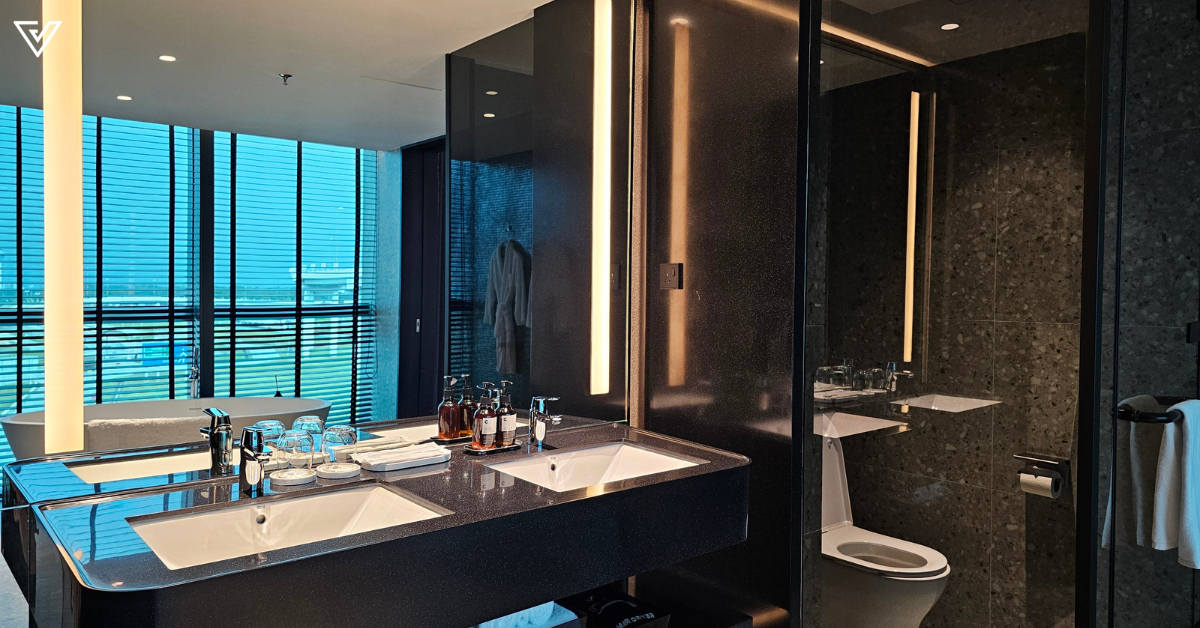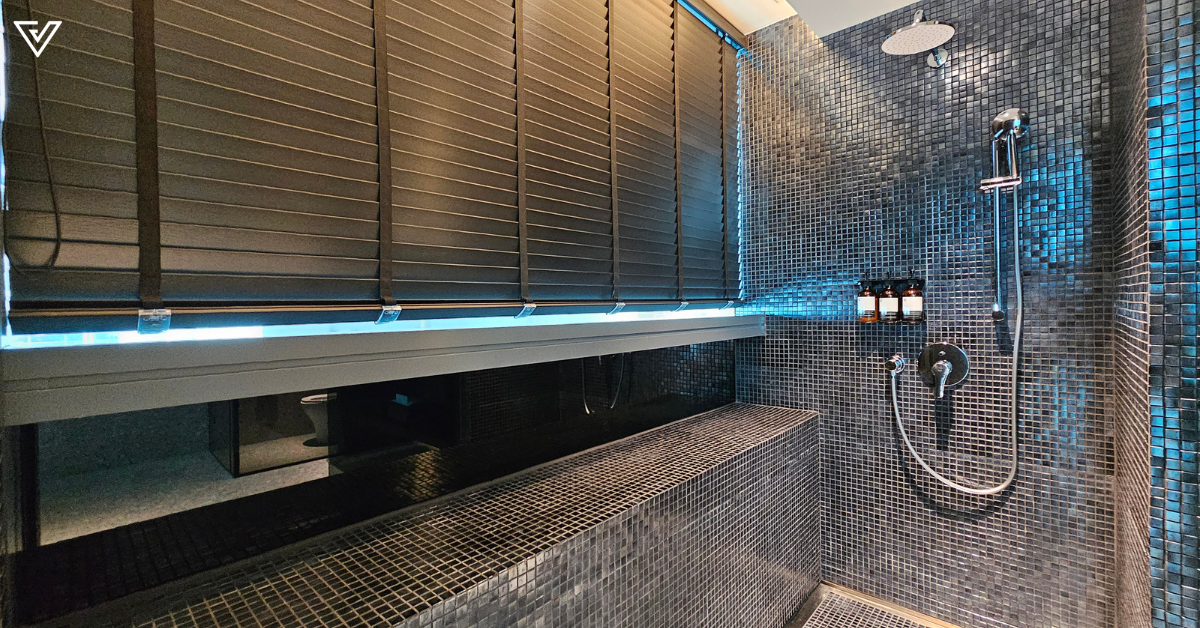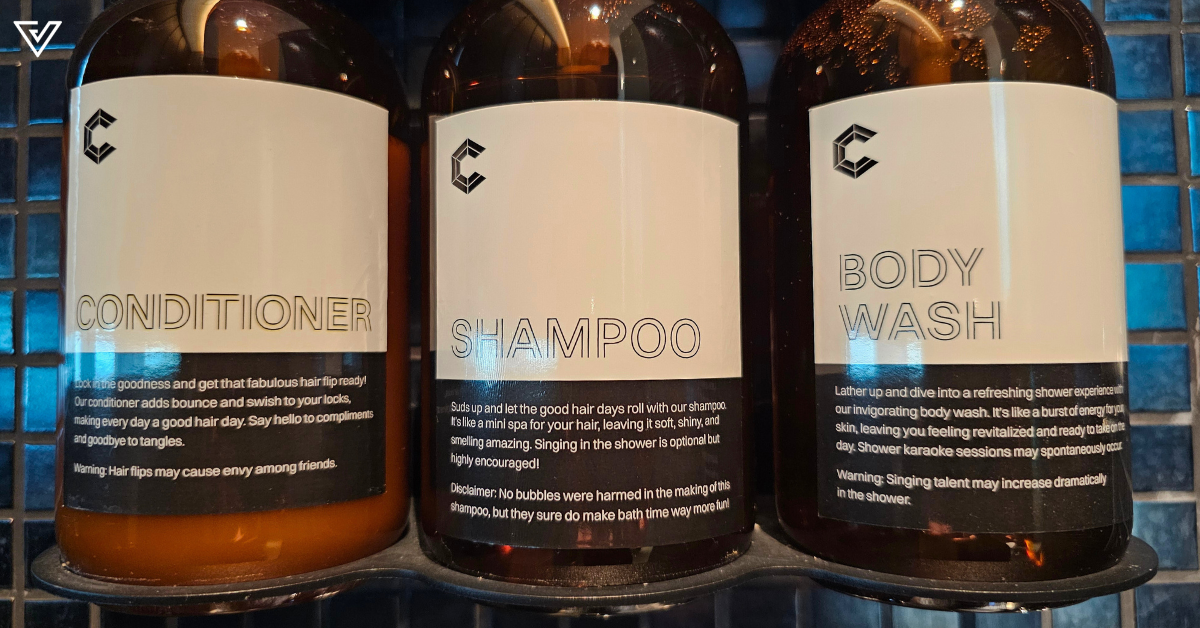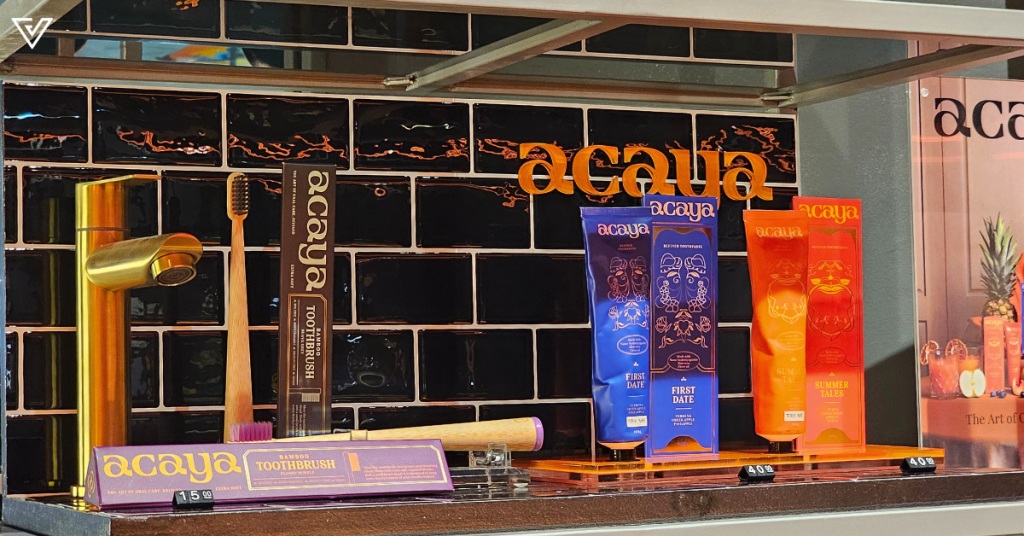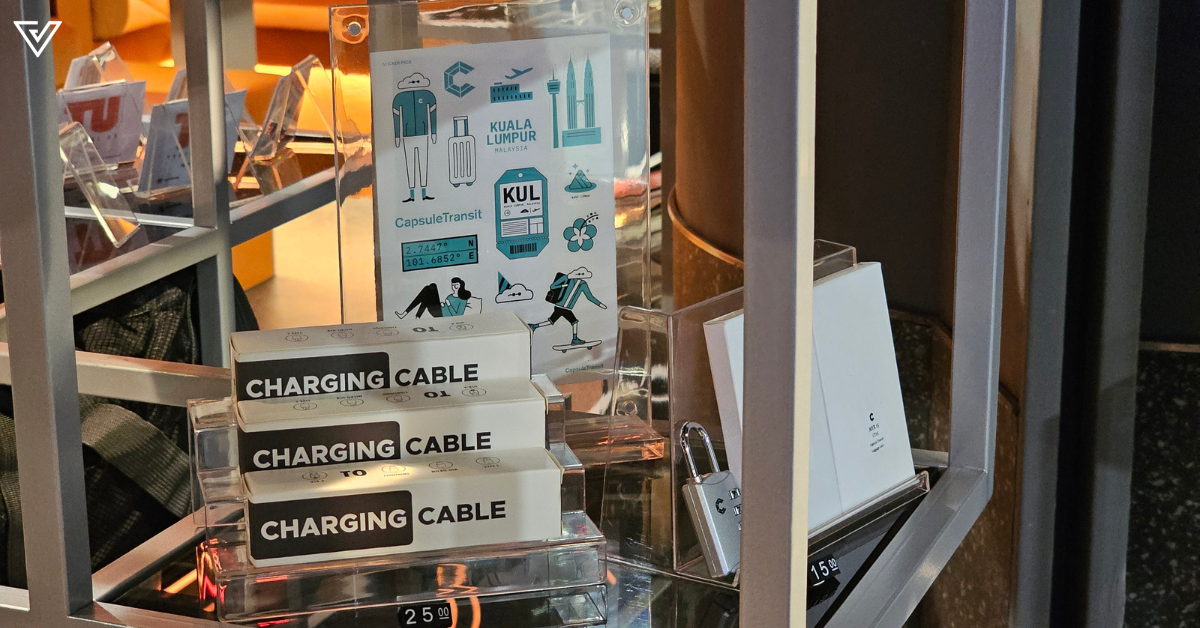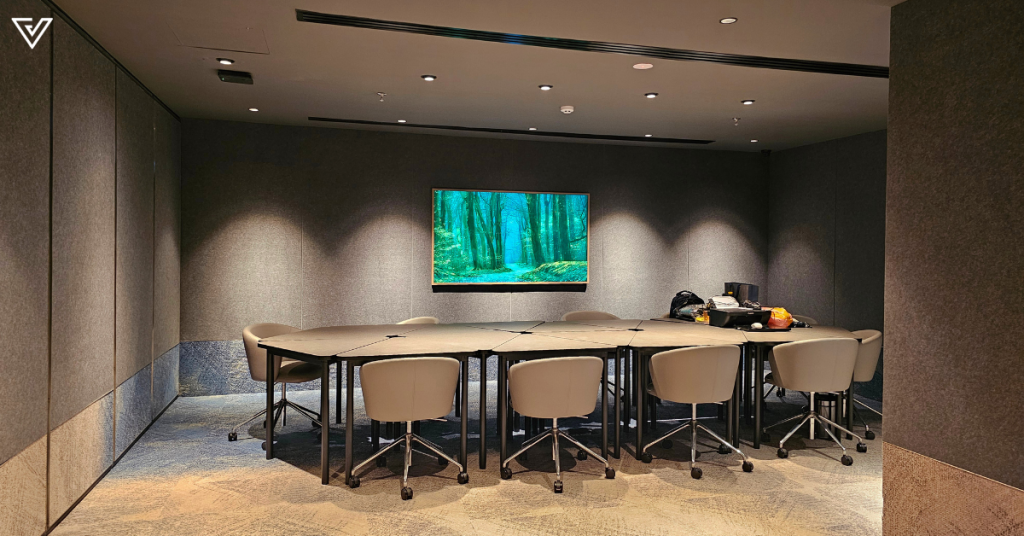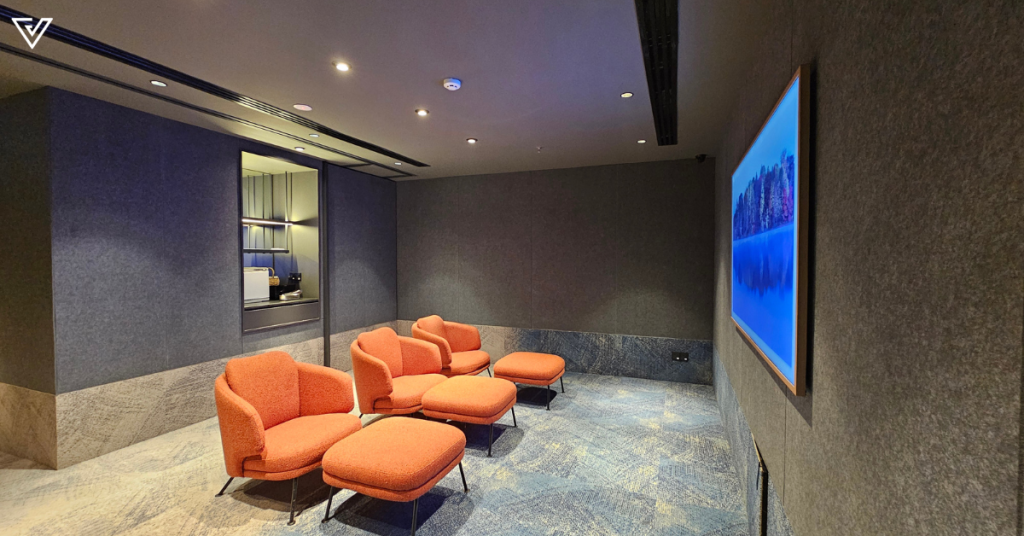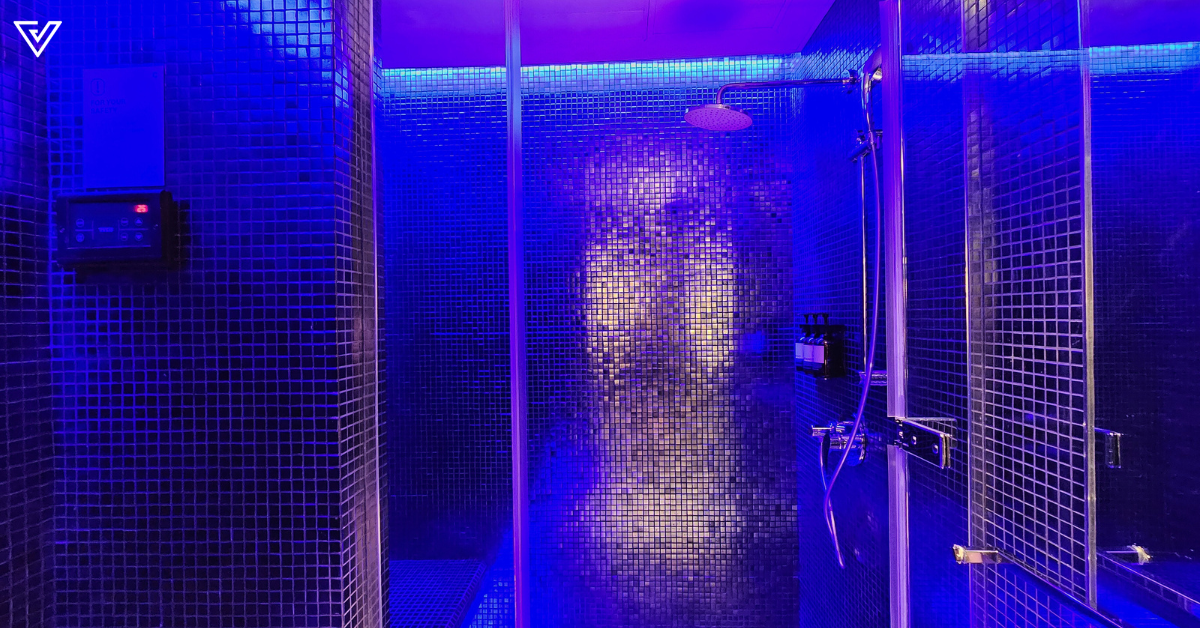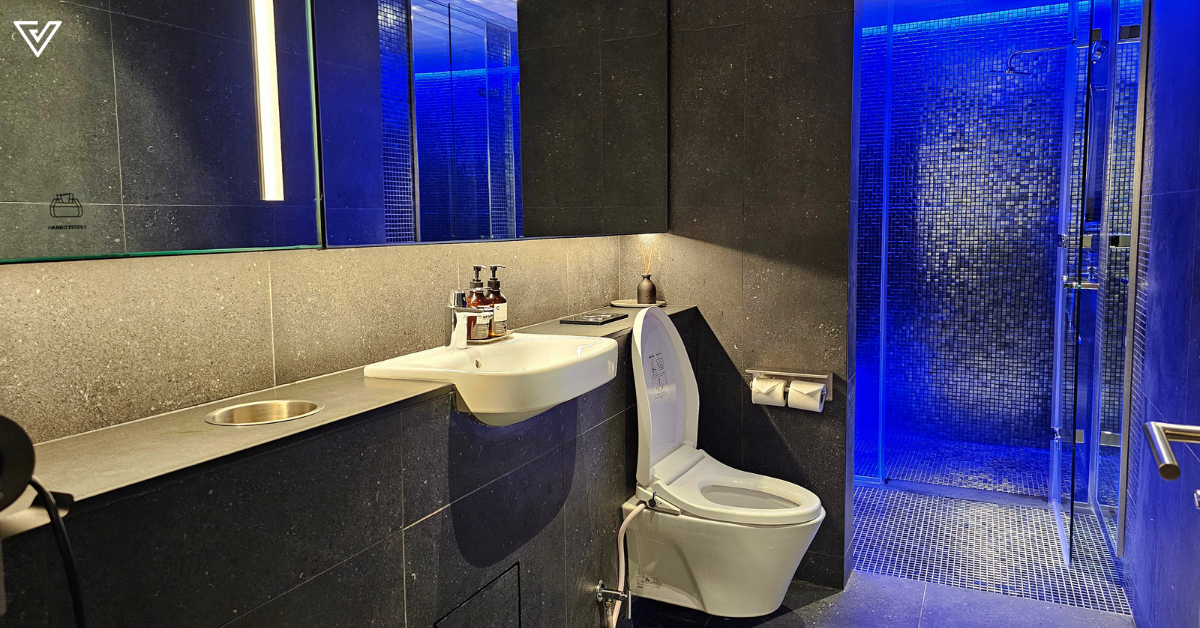Here’s 7 takes on edible insects in S’pore, from cricket protein bars to mealworm margaritas
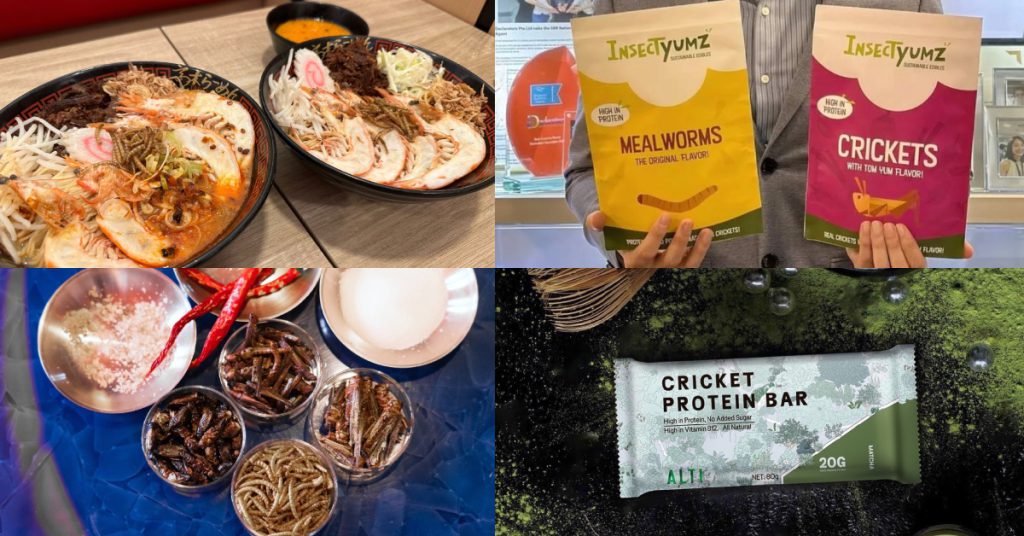
In July, the Singapore Food Agency (SFA) approved 16 species of insects for consumption.
From locusts to grasshoppers and mealworms, these critters, which offer a sustainable alternative to meat and are packed with protein, are now making their way onto local menus.
Curious to give these creepy crawlies a try? Here are some businesses in Singapore with insect-based offerings:
1. Fura Bar
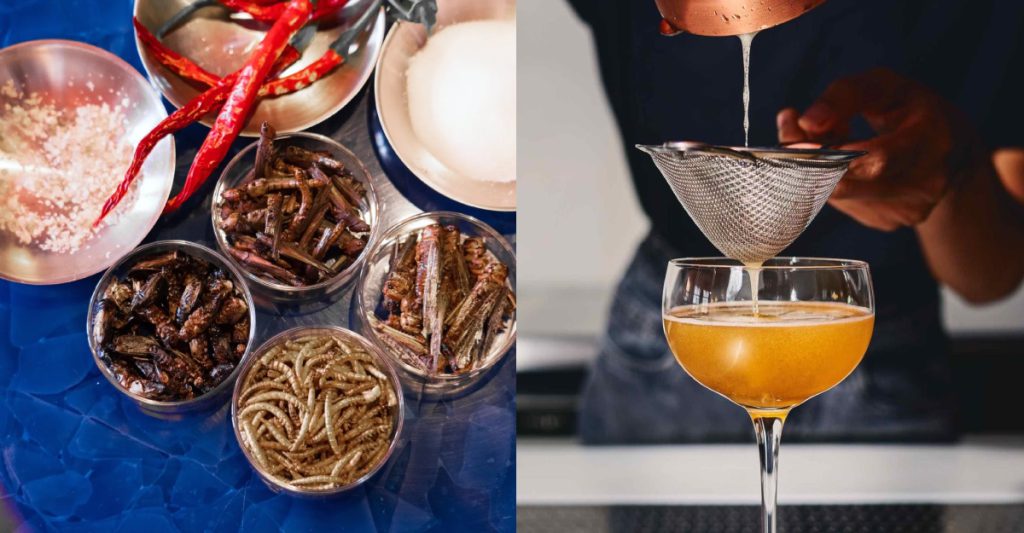
Located on Amoy Street, Fura is a bar that aims to make sustainable dining accessible by utilising ingredients with a low carbon footprint. Among these ingredients are insects—specifically mealworms—which they incorporate into their margaritas.
To make their mealworm margaritas, the bar stir-fries and infuses them with a chilli spirit. This infusion is then mixed with orange liqueur and lime.
In addition to mealworms, Fura’s eye-catching menu features other ingredients that are either abundant or in excess, such as jellyfish—an “almost invasive pest” in the water, according to founder Sasha Wijidessa.
2. House of Seafood
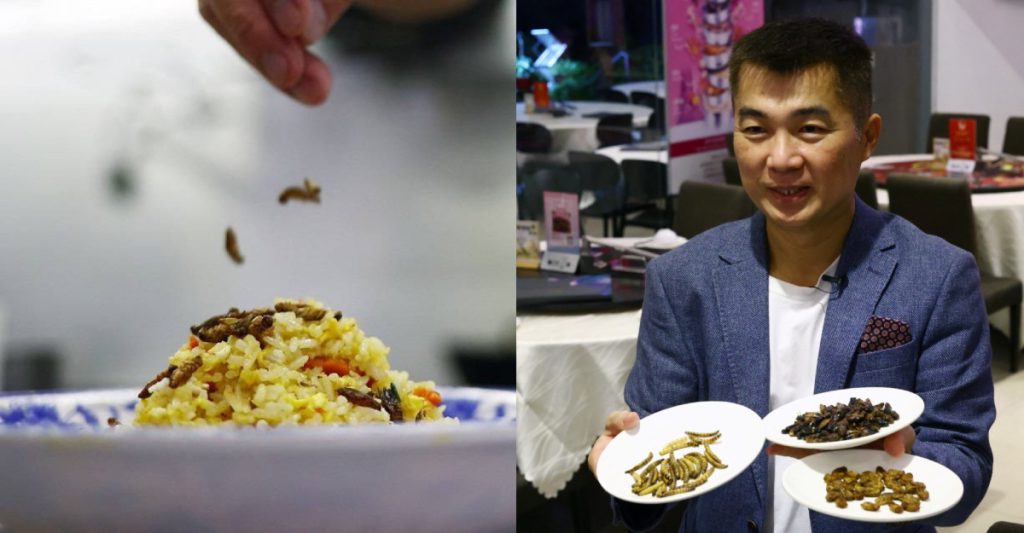
At Singapore’s House of Seafood restaurant, fish-head curry is served with a side of crunchy crickets, and their tofu has insects crawling out of it. The eatery in the first in Singapore to incorporate insects into its menu following SFA’s approval.
From the approved species of edible insects, House of Seafood has included superworms, crickets, and silkworm pupae in various seafood dishes, including their signature salted egg crab, offering a diverse selection of 30 insect-infused options for diners.
3. InsectYumz
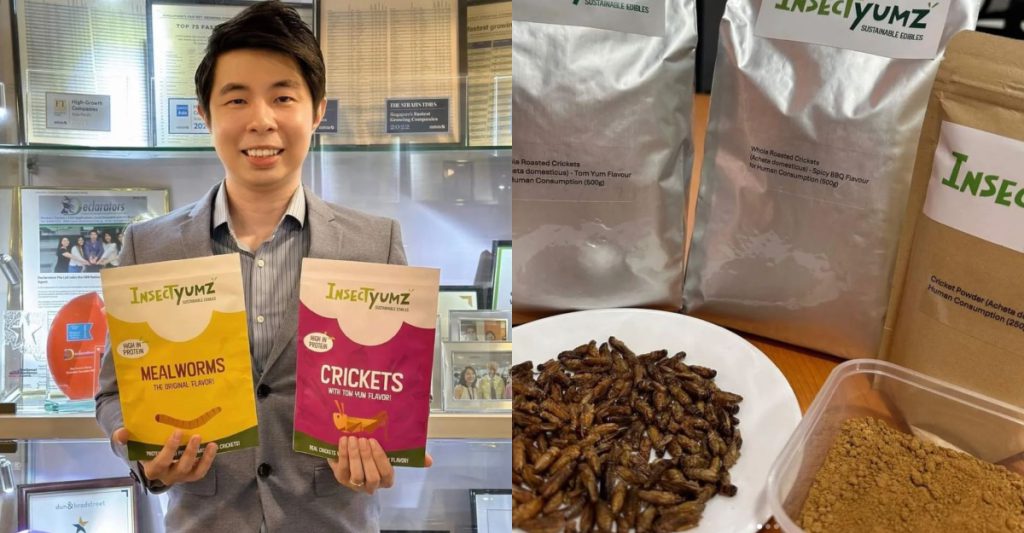
InsectYumz offers edible bugs in the form of snacks and protein powder. Their products include mealworm and cricket snacks that come in a variety of flavours such as tom yum and BBQ, as well as cricket protein powder.
The company also claims that it is the “first and largest importer and supplier” of insect food for human consumption in Singapore. They supply most of SFA’s approved list of species such as crickets, mealworms, silkworms, locusts, white grubs, and honeybees.
4. Altimate Nutrition
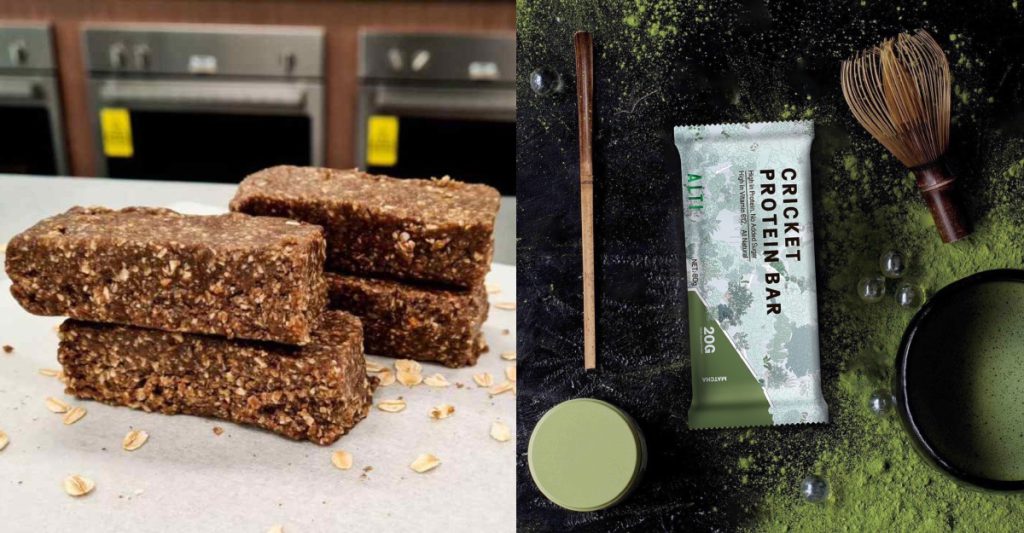
Altimate Nutrition is a homegrown startup that makes protein bars out of cricket-based flour. Their protein bars come in a range of flavours, including strawberry, matcha, and chocolate.
The company also sells cricket protein powder and snacks including tom yum flavoured roasted crickets and silkworms.
Beyond producing their own products, Altimate Nutrition has recently formed a joint venture known as Proteinnovation with their supplier, aimed at advancing R&D for edible insects. Through this venture, they plan to build high-tech cricket farms in Thailand to scale up the production of crickets.
5. Morus
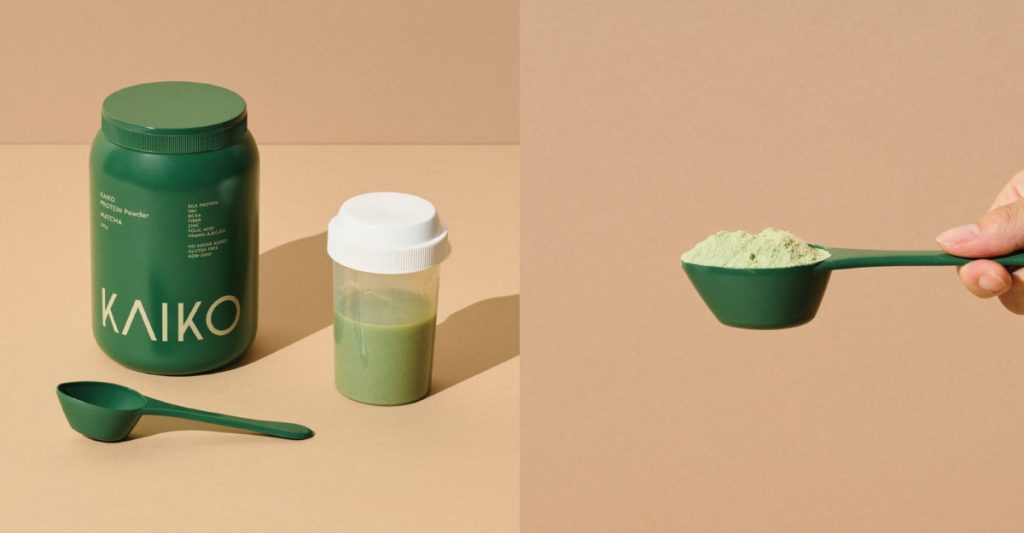
Japanese start-up Morus produces silkworm-based products targeting high-end restaurants and health-conscious consumers.
Its products include a pure silkworm powder—which can be used as a food ingredient—along with matcha powder, protein powder, and protein bars, which are sold under the brand KAIKO.
KAIKO’s matcha protein powder is currently priced at S$248 per 500g bottle, however, more affordable options are in the works.
6. Origin Bar
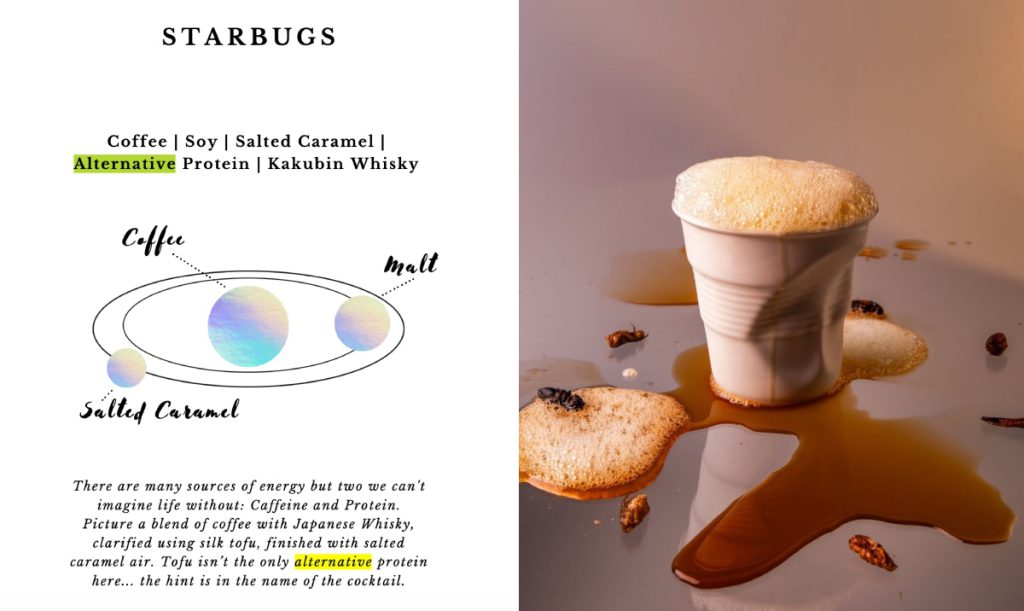
For its newest menu, Shangri-La Singapore’s Origin Bar has developed a cocktail that’s chock-full of protein.
Starbugs is a blend of Japanese whisky and coffee, clarified with silk tofu and crowned with salted caramel air—but the real protein kick comes from its secret ingredient: crickets. The bar has worked with Altimate Nutrition to launch the cricket-based cocktail.
7. Takagi Ramen
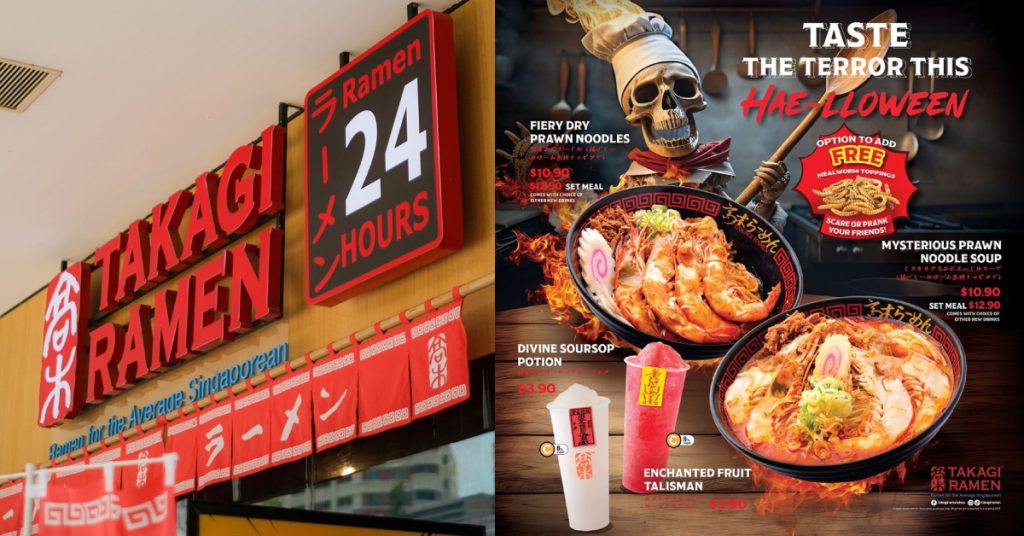
For Halloween this year, Takagi Ramen is offering prawn noodles with a crunchy, free side—deep-fried mealworms. You can “prank or scare your friends” by adding them to their noodles, said the homegrown ramen chain in a press release.
The Halloween menu is available at all Takagi Ramen’s outlets, and it is priced at S$10.90. You can also get the set meal at S$12.90, which will come with one of the two new Halloween-themed drinks—the Divine Soursop Potion or the Enchanted Fruit Talisman—though they unfortunately do not come with edible insect add ons.
-//-
As more F&B businesses in Singapore embrace alternative food sources, the future of dining may just include a few more legs.
Whether you’re a daring foodie or just simply intrigued by the idea, trying these dishes could be your first step toward a greener, more sustainable diet. Will you take the bite?
- Read other F&B articles we’ve written here.
Also Read: Eating insects: These 20-year-old S’porean students created protein bars made out of crickets
Featured Image Credit: Altimate Nutrition/ InsectYumz/ Fura Bar/ Takagi Ramen
MOM: Fewer companies in S’pore intend to increase wages and hire in Q4 2024
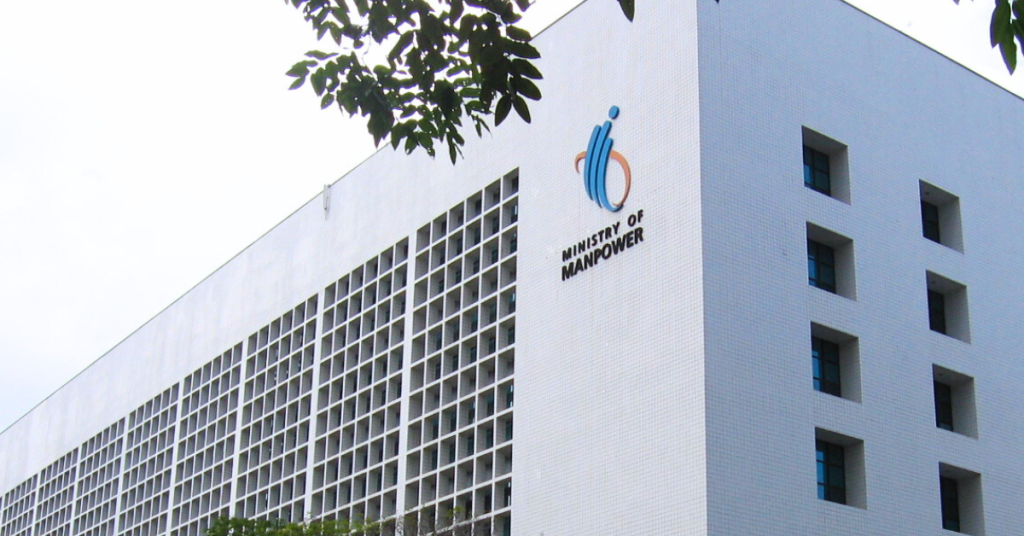
Fewer companies intend to raise wages in the next three months, according to advance labour market estimates released by the Manpower Ministry (MOM) on October 29.
The percentage of companies that plan to raise wages in Q4 fell to 15.6%, from 28.6% for the third quarter.
Meanwhile, the intention to hire has also fallen for this fourth quarter, going from 49.4% to 43.2%.
“As global economic risks such as heightened geopolitical tensions and trade conflicts persist, firms are likely to prioritise maintaining current operations over expansion or wage increases,” MOM said, according to an article by CNA.
An expanding labour market overall
Overall, advance estimates indicate an expanding labour market in Q3 2024, with low levels of unemployment and retrenchments.
This outlook is supported by the anticipated year-end hiring for the festive season and the positive economic outlook from the revised GDP growth forecast.
“While there was a decline in hiring and wage expectations among companies for Q4 2024—reflecting ongoing uncertainty in export-oriented sectors—we expect employment to continue to expand in the next quarter, and the labour market to remain tight,” they said.
A tight labour market means a relatively low unemployment rate and a scarcity of available workers to fill job openings.
Desmond Choo, NTUC Assistant Secretary-General, posted to Facebook on Tuesday that these advance estimates show “promising signs for workers and businesses alike”.
In the labour market advance release, the MOM also encouraged employers and workers to “press on with transformation” to remain “competitive and resilient amid prevailing economic and global uncertainties”.
The Ministry also shared that programmes are available to support both employers and workers.
For one, Workforce Singapore (WSG) has worked with sector agencies to launch 17 Job Transformation Maps (JTMs) which provide actionable insights on the impact of technology and automation on businesses and jobs.
Workers can also make use of the CareersFinder feature on WSG’s MyCareersFuture job portal, which harnesses data and artificial intelligence, to explore career options that make use of their skills and experience, and pathways to reach their career goals.
There’s also the Career Conversion Programmes (CCPs), which support mid-career workers in undergoing industry-recognised training.
The Labour Market Report Third Quarter 2024 is set to be released in mid-December 2024, and will provide a comprehensive assessment and more details of the labour market situation in Q3 2024.
- Learn more about the Ministry of Manpower here.
- Read other articles we’ve written about Singapore here.
Also Read: Singapore is the 3rd most burnt-out city in the world, here’s why & what can be done
Featured Image Credit: Wiki Commons
Meet Sahur Saleim, the S’porean influencer & MUA whose makeup brand was seen at the Oscars
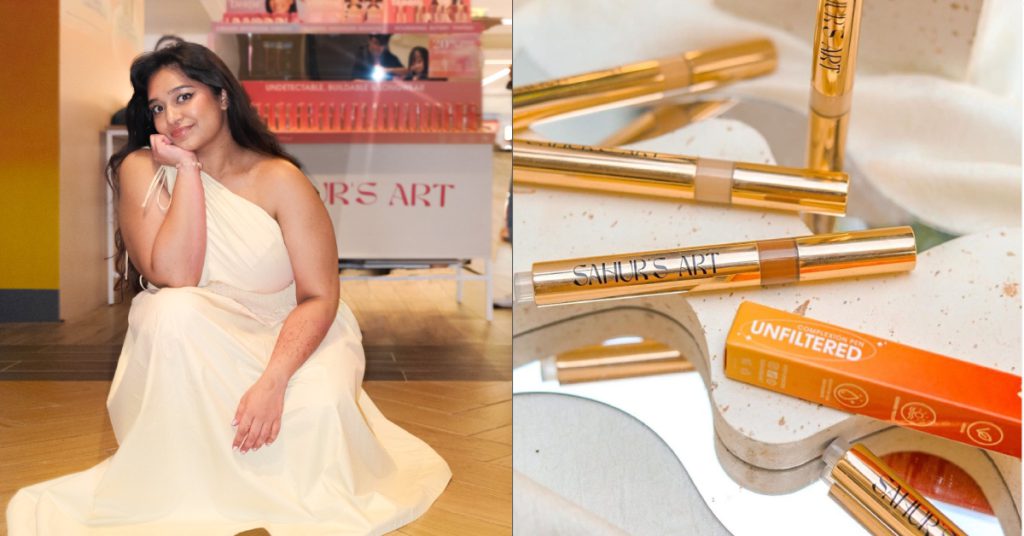
As a teenager, I was no stranger to watching makeup tutorials on Instagram and YouTube and (unsuccessfully) re-creating these looks on myself.
While many came from the West, one Singaporean beauty content creator and makeup artist (MUA) is making a name for herself in the industry—Sahur Saleim, founder and CEO of Sahur’s Art.
When she was 10, Sahur moved from Singapore to Dubai with her family. She grew up in a “maximalist beauty environment”, where bold eye makeup and lip colours were commonplace.
This led her to experiment with makeup in her teens, regardless if it was “non-practical”, and posting her tutorials in 2013.
She first went viral on Instagram in 2015
Little did she know, she would get her first big break two years after starting her account.
In 2015, when she was 17, one of Sahur’s videos went viral, and she caught the eye of Huda Kattan, an Iraqi-American MUA and beauty content creator.
That moment felt “quite surreal” to Sahur, given that Internet virality was a novel concept at the time.
I remember explaining it to my dad in the early stages, saying, “Look I have 6,000 followers now! This really famous creator (Huda) reposted my video, it has 100,000 views!” and he was so supportive but also confused, so he said, “Oh amazing! Is that a lot? What happens now?”
Sahur Saleim, founder and CEO of Sahur’s Art
Since then, Sahur’s following has continued to grow, which gave her the confidence to launch Sahur’s Art in 2021—at just 23 years old.
The pressures that fame has on influencer-run small businesses
Over the years, many makeup artists (MUAs) and beauty influencers have launched their beauty brands, such as Huda Beauty by Huda Kattan and Nimya by Nikkie de Jager, also known as NikkieTutorials.
However, we have also seen some cases where well-known beauty creators failed to deliver on their launches, which incited ire from paying customers and resulted in immense damage to their reputations as creators and entrepreneurs.
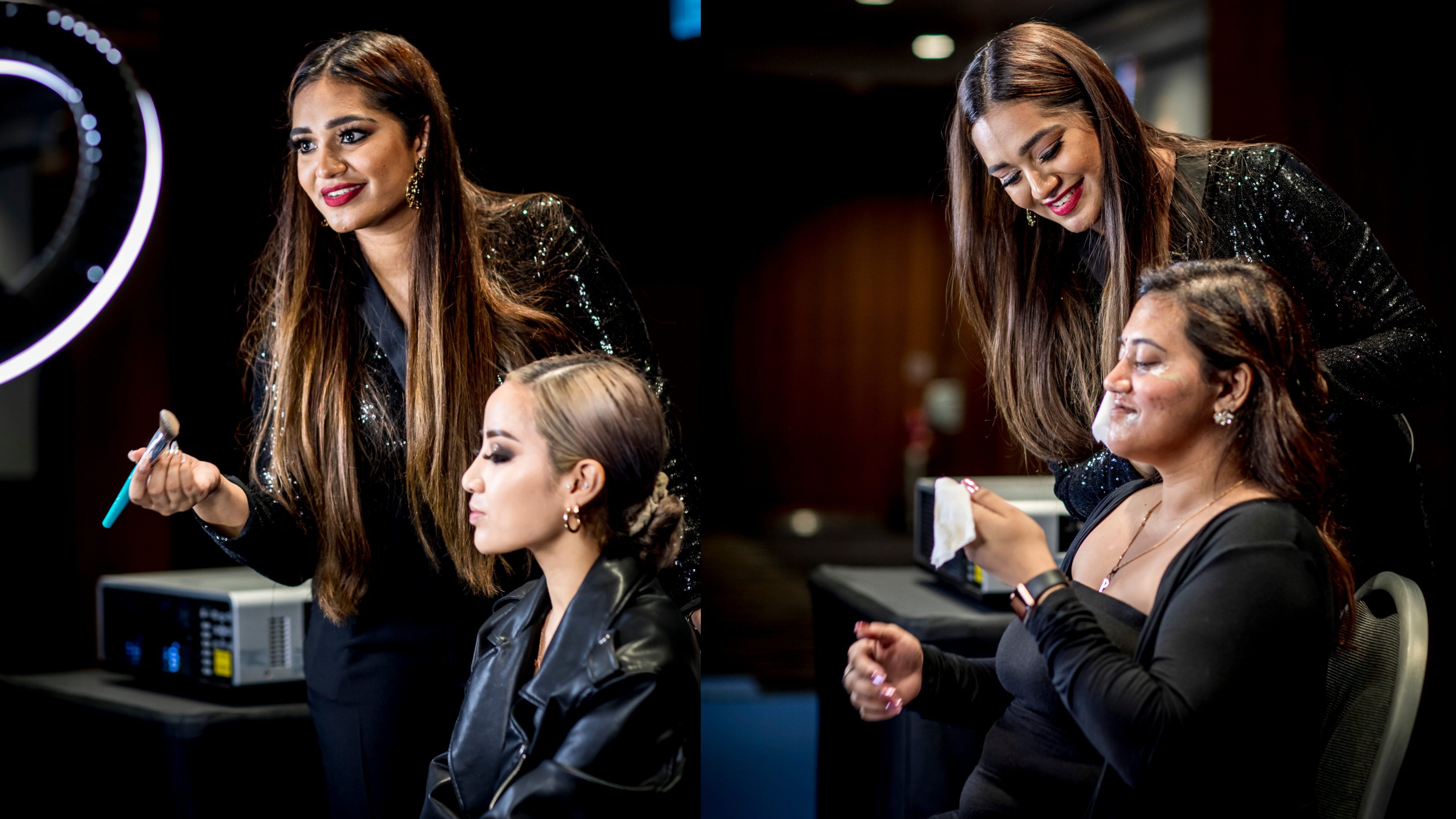
Like her industry seniors, Sahur felt the pressure to perform, citing influence as a double-edged sword.
Leveraging an audience that is already interested in beauty and has experience with makeup can boost consumer awareness for small independent brands. However, people would also naturally compare their products if they could match their favourites.
“The pressure to deliver on these formulations has definitely caught me sometimes,” Sahur said with a laugh, adding that it pushes the team to strive for better products and customer experiences.
For makeup brands, it all starts with choosing their manufacturing labs. In a previous interview, Sahur shared she initially had a contract with a lab in China, even though the “crème de la crème” of beauty products is manufactured in France or Italy.
However, the COVID-19 pandemic hit—indefinitely halting the brand’s progress, and Sahur eventually went with an Italian manufacturer.
“At the earlier stages of the brand, I wanted everything to happen faster! At times, we spent so much money shipping our bulk order from Italy to Singapore simply because I wanted to launch it three weeks earlier,” shared Sahur.
Listening to their audience
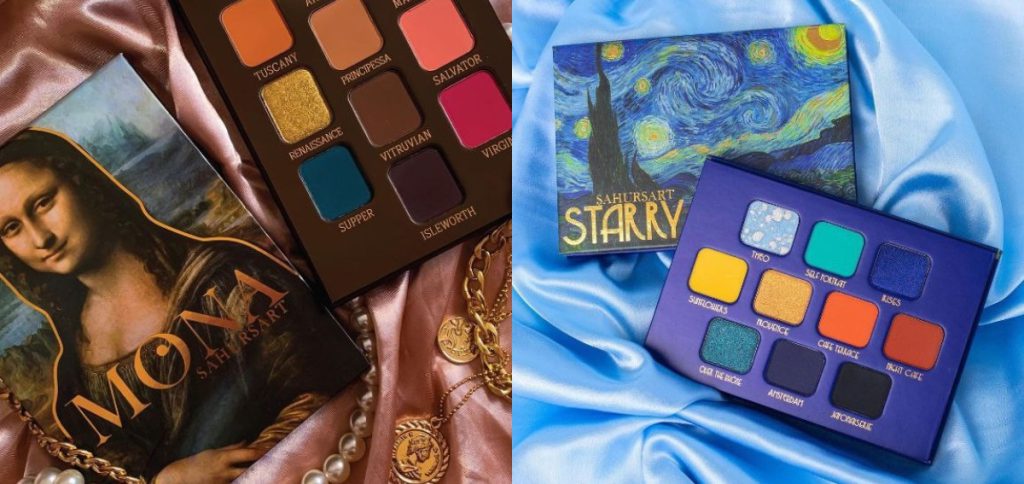
When Sahur’s Art first launched, its cosmetics were inspired by famous art pieces, such as “The Mona Lisa” and “Starry Night,” and included bright, bold-coloured eyeshadows and lip products.
It seemed that the brand was doing well until a customer, who had only purchased a nude lipstick at its first pop-up in 2021, made Sahur rebrand the entire business.
She said, “I really want to support your brand because I love what it stands for, but I just don’t know how to use blue eyeshadow…” and suddenly it clicked for me.
With our previous branding, I was working so hard to be taken seriously and have the most high quality makeup artist level products, I didnt realise that could isolate people in our community who seldom wear makeup. So in the new phase, I decided our priority was making beauty easy and convenient!
Sahur Saleim, founder and CEO of Sahur’s Art
Since then, the brand has released a series of “summer-proof” and “beginner-friendly” makeup products, with each launch aiming to address beauty concerns, including acne, eczema and skin sensitivity, which Sahur has experienced herself.
“Trends come and go. For a small brand like us, chasing a new trend every week will not be sustainable,” emphasised Sahur. Hence, the brand made it their mission to create versatile cosmetics that can be used no matter what’s in trend.
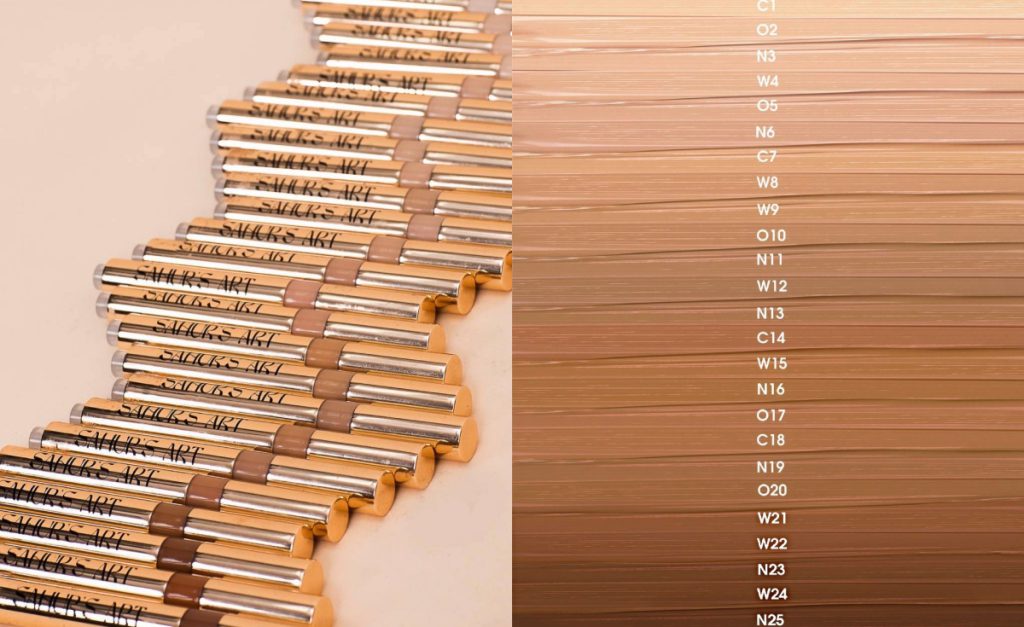
While Sahur has remained tight-lipped about the brand’s finances, she shared that the company has remained self-funded since its inception, with the profits reinvested for continued innovations.
Notably, Sahur invested a five-figure sum, which she stated was a “huge investment”, to ensure that the brand continues to cater to a diversity of shades and undertones, and more reinvestments were made to continue the process.
Despite the high costs, the rebranding was successful, as Sahur claimed that Sahur’s Art saw a 430% increase in annual sales, thanks to the support it received from its customers.
Going into the brick-and-mortar space
Since then, the brand has gained popularity on social media and collaborated with well-known names, such as Love, Bonito, for exclusive product releases.

Not only that, Sahur’s Art makeup products were also spotted on two Hollywood celebrities, Mindy Kaling and Richa Moorjani, who wore them to the Oscars—a feat that is seemingly impossible to achieve for smaller brands.
Sahur’s Art has also entered the brick-and-mortar space this year, where they collaborated with health and beauty retailer Guardian to launch a few pop-up stores islandwide.
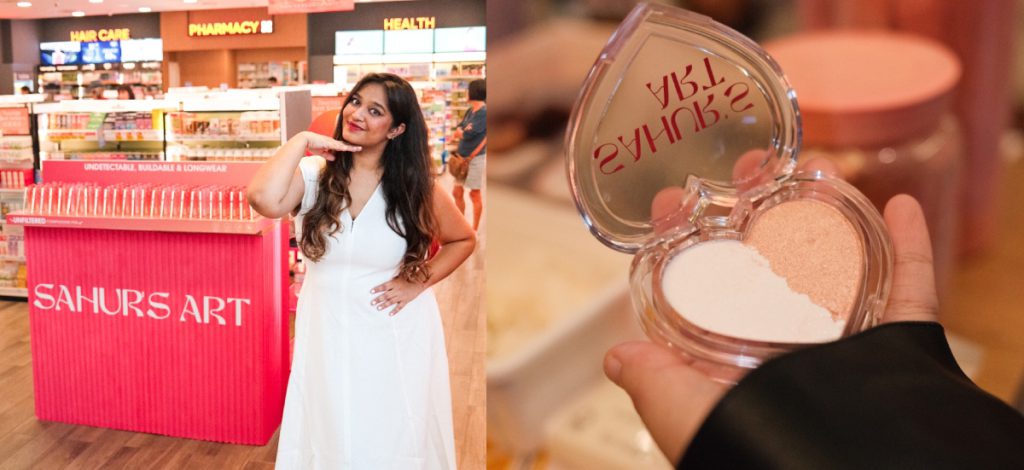
As the brand had been operating as an ecommerce company, Sahur shared that many customers often experienced issues while shopping for their beauty products online and asked when they could try them in person.
While the brand has leveraged technological plug-ins to solve their concerns, Sahur acknowledged that allowing customers to try in person will ease their hesitations, adding that she has been working with Guardian as a content creator for five years and could not miss the opportunity to collaborate.
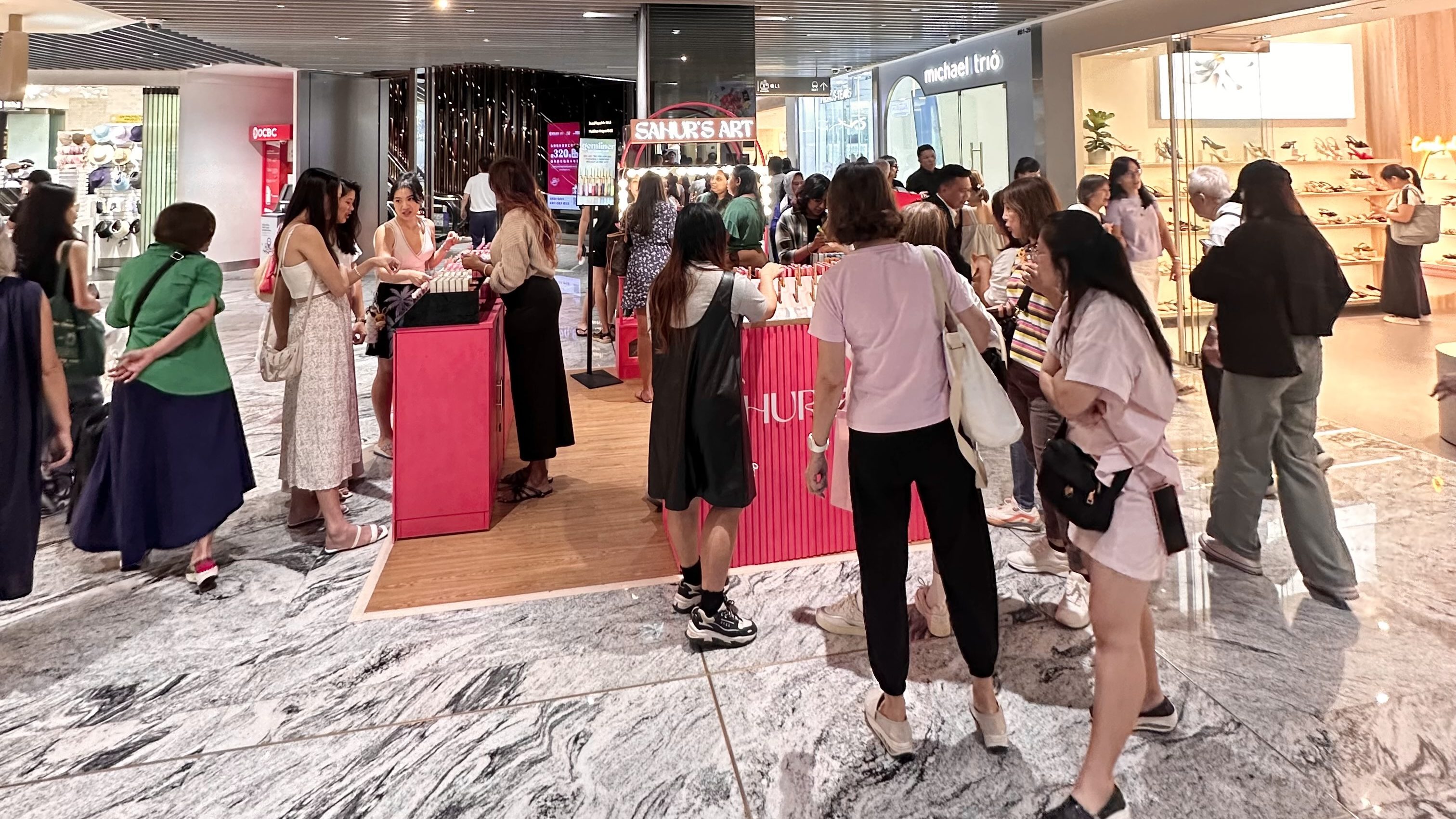
Following the success of the collaboration, Sahur’s Art is currently focusing on making the brand “easier to shop” through hands-on experiences for its customers. It has opened its independent kiosk at Wisma Atria at Orchard, which will be open until the end of November this year.
Looking forward, the brand has also told Vulcan Post that it’s working toward opening its first official brick-and-mortar outlet at Plaza Singapura in December, and continuing to launch more products down the road.
Sahur has also expressed her ambition to bring Sahur’s Art beyond Singapore. “In the future, we would love to target surrounding markets like Malaysia and larger ones like the US and the UK. Currently, our focus is on launching more products, so there’s enough range for a full face of Sahur’s Art!”
Also Read: Why this 19 Y/O poured her life savings into opening Singapore’s 1st horror art jamming studio
Featured Image Credit: Sahur’s Art
RM2,000+ for a night: We stayed overnight at this lux suite in KLIA2, was it worth it?
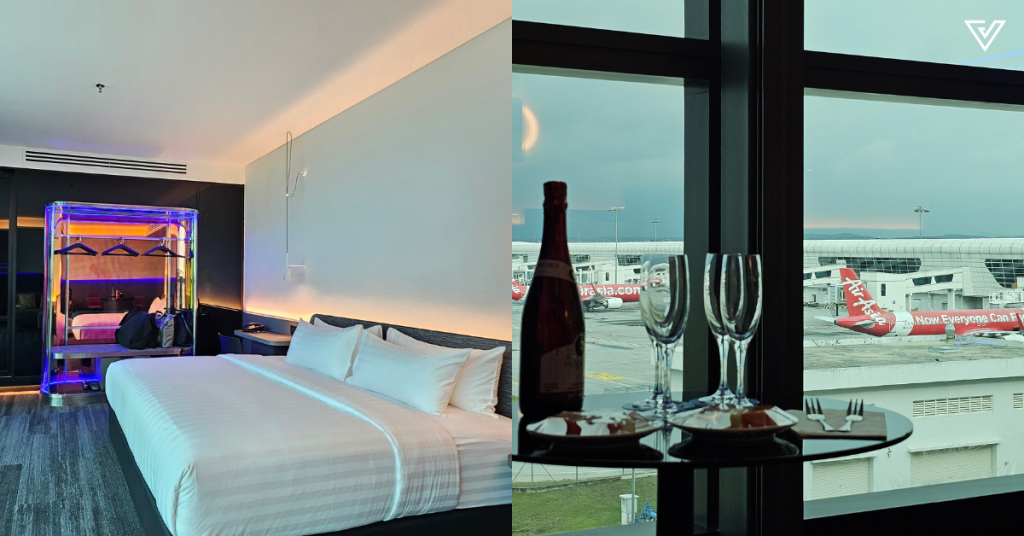
Long layovers, delays, or God forbid, missed flights. These are things that are unfortunately part and parcel of the flying experience.
While you could opt to loaf around in the public waiting areas (I know I’ve done that a multitude of times), there’s also an option to check into an airport hotel and lounge in a slightly comfier environment.
In the case of CapsuleTransit MAX, though, I’d say it’s a more than just “slightly comfier”. At least, they seem to promise that, with the claim of it being “for travellers seeking a blend of luxury and comfort”.
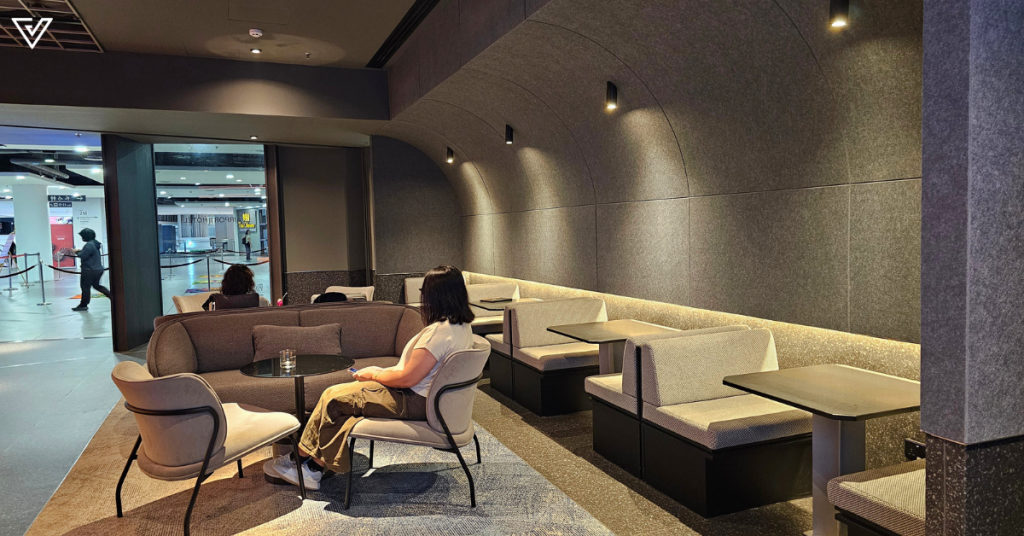
Although the Vulcan Post team had no intention of actually travelling anywhere, we got the opportunity to spend a day at CapsuleTransit MAX recently. So, we found ourselves packing our overnight bags and making our way down to KLIA2.
Here’s how our 24 hours in the airport hotel and lounge went.
Running away into the runway suite
Navigating to CapsuleTransit MAX was an easy task, at least for those who have just entered KLIA2. Just head into the terminal, go to level 2M, and you’ll be there. We imagine the process for those who just got off a plane to be a little trickier.
For context, CapsuleTransit has a few locations—one in KLIA1 and three in KLIA2. MAX is the more luxurious option out of the lot, and it’s touted as “Malaysia’s only luxury airport transit hotel”.
Walking into its premises, the dim, warm-toned lights gave off a moody and almost futuristic vibe, but we were welcomed by good old-fashioned hospitality with a dragon fruit-centric smoothie and a plate of fruits.
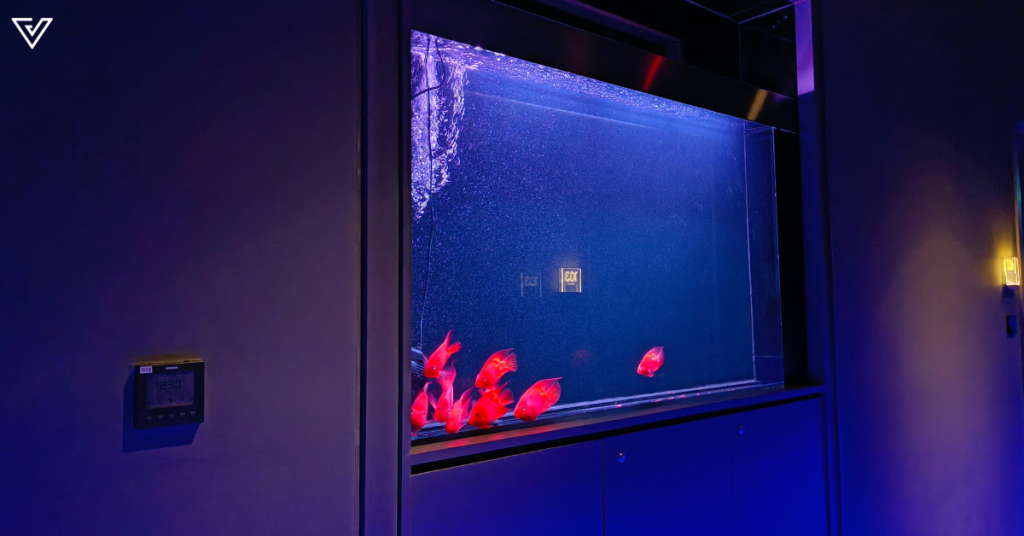
Led by a staff member, we journeyed through blue-lit hallways until we reached our home for the night—the Runway Suite, the only one of its kind. That’s right, this room promises views of the airport runway.
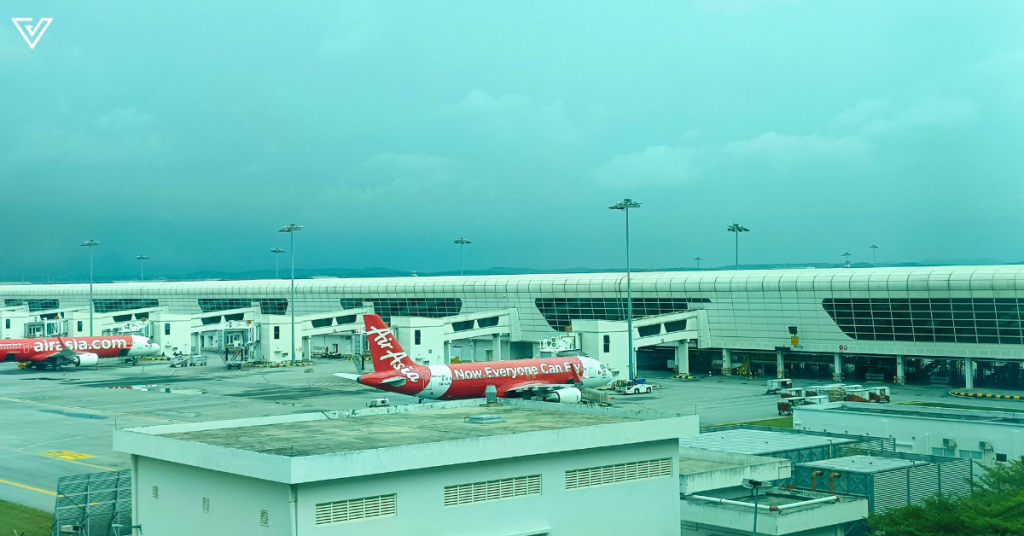
Although there’s only one King bed, the room supposedly fits up to four adults, thanks to the sofa bed. Blue built-in strip lights give the room an edgy touch that fits the MAX branding as well. In particular, it makes the open-door wardrobe look uniquely iridescent.
Upon entering, we encountered a bar island that housed a mini fridge underneath with complimentary soft drinks. Behind that is the sofa, providing a perfect seating area to look out the window (which, by the way, has motorised sheer and blackout curtains).
Sadly, the runway we were looking out into didn’t actually get much action. There were a number of planes slowly taxi-ing in and out of the zone, but from our room, we couldn’t easily see any take-offs or landings, even in the distance.
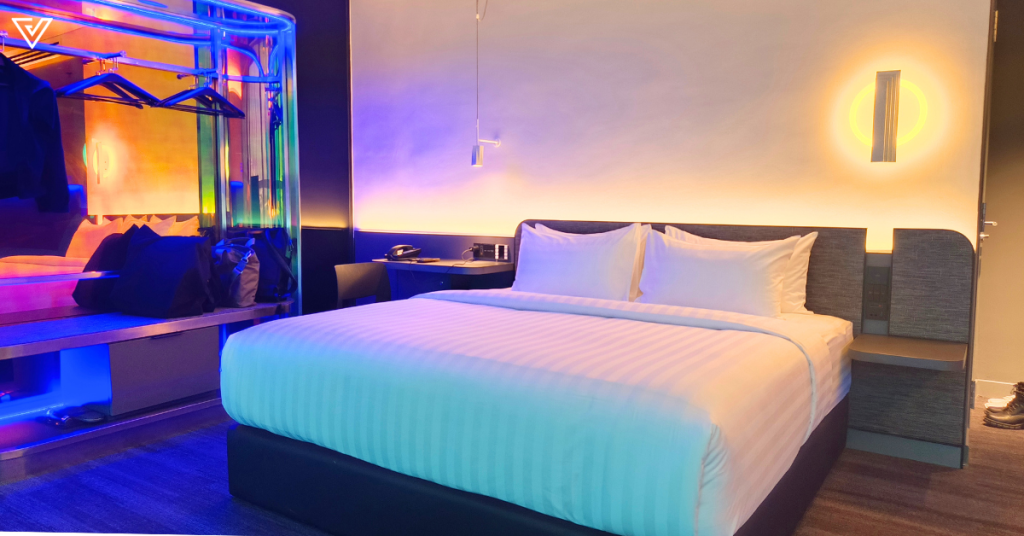
Still, it’s not a view you get every day. Plus, that meant that our room was rather quiet despite being in an airport.
What impressed us the most, though, was the spacious bathroom. With a dark, monochromatic aesthetic, it certainly felt very luxe.
For one, the tub is rather huge, and the complimentary bath salts made it extra tempting. The dual sinks were a nice touch as well. The body and hair care products offered, which sported CapsuleTransit’s own branding, were of a pretty good quality.
The only thing that we had to complain about the bathroom was the lack of a trash can and a box of tissues. Having to shuttle between the bathroom and the bar area during our skincare regimen was pretty disruptive.
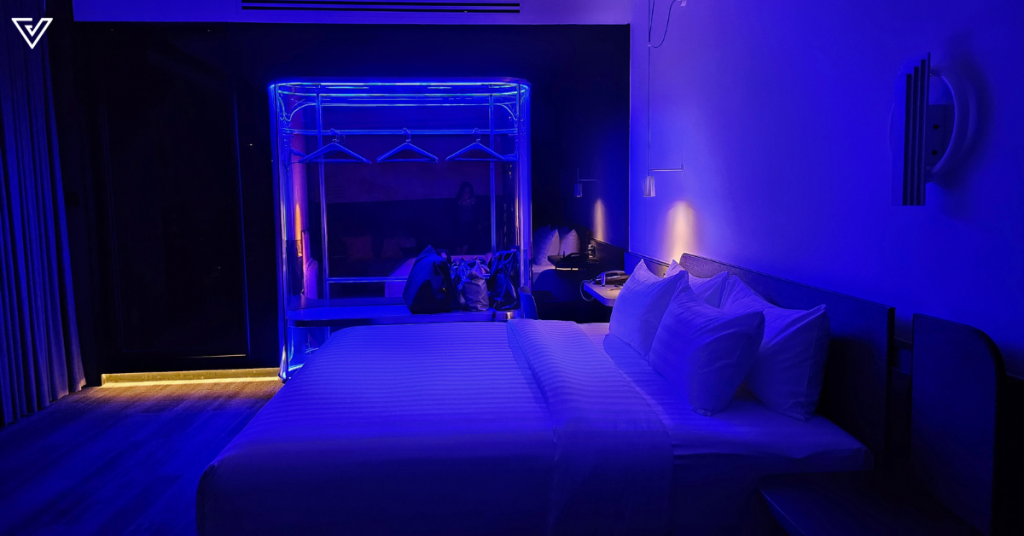
The hotel usually offers three-hour, six-hour, or 12-hour stays, but we were graciously given the experience of staying in the space for a full 24 hours. So, before relaxing in the room, we ventured out to explore more of what the hotel had to offer.
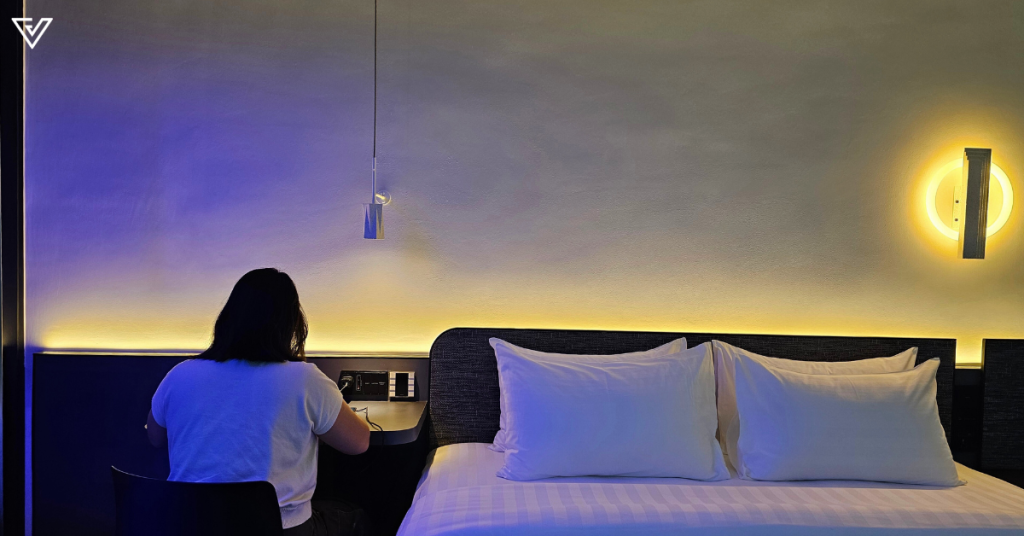
A suite of amenities and facilities
One of the key offerings here is the gym. Although the equipment in the gym was rather minimal, it certainly covered quite a few bases.
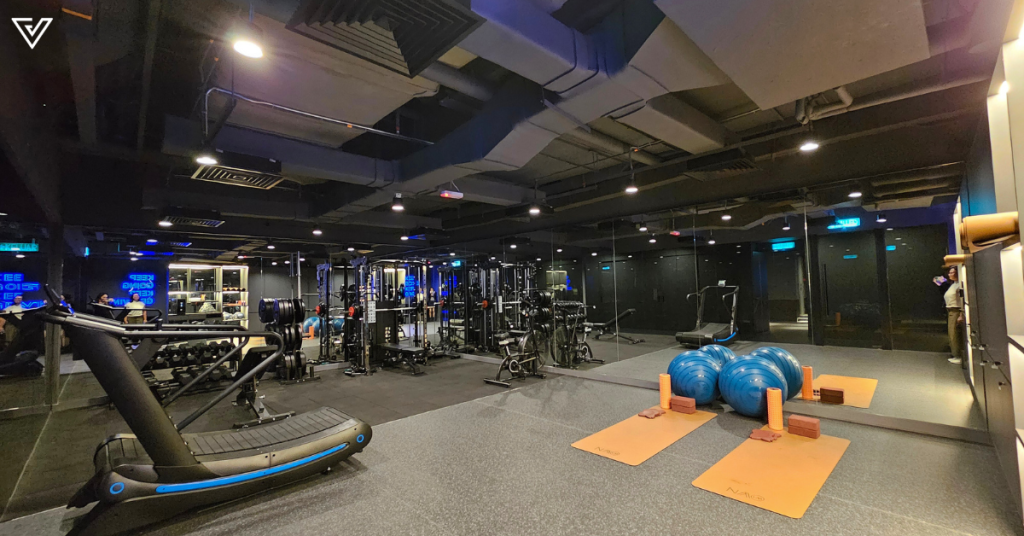
Other than some strength training equipment, there was a non-motorised treadmill and stationary bike, the latter of which had… a fan that operated when you started cycling? I’m not a gymgoer, but the equipment looked rather cool.
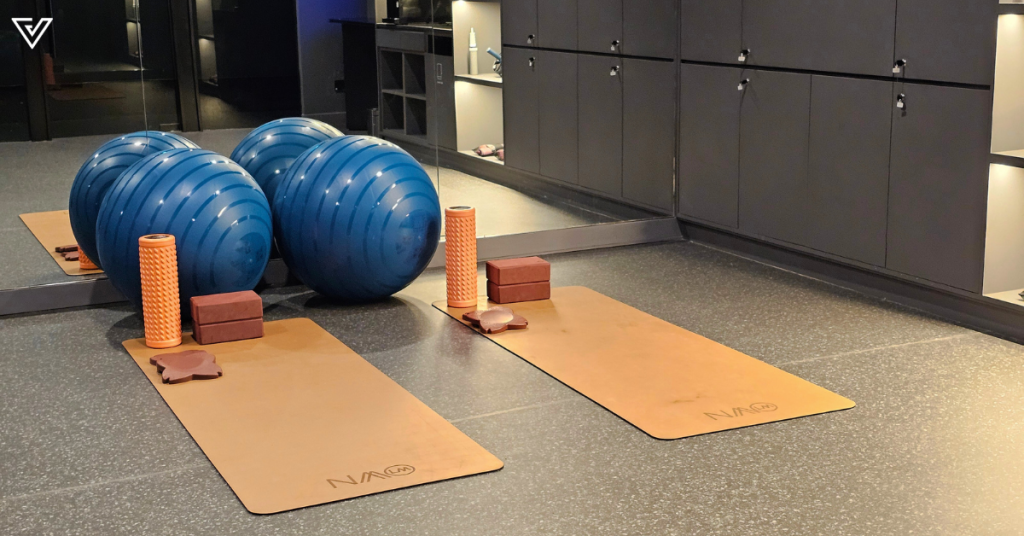
There were two yoga mats on the floor with relevant equipment like arm weights and an ab wheel. We spotted some Livlola bands here, which was a neat addition.
Out at the lounge, there are communal shower amenities, perfect for travellers who are only dropping in for the lounge services.
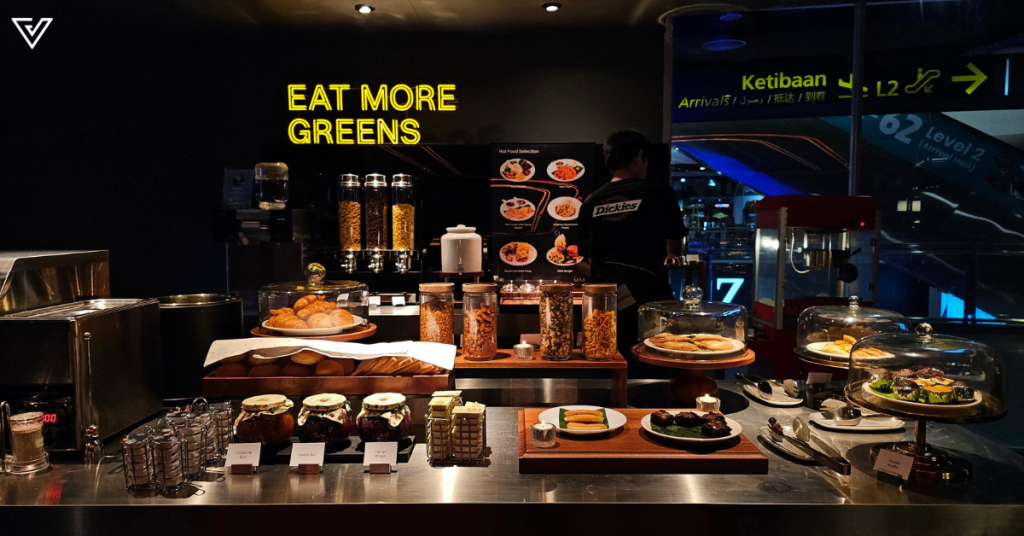
After washing up, you can also dine at the lounge. The menu is rather limited, but there’s options for both Western dishes as well as local delights. We tried the pizza melt as well as the MAX burger, both of which we quite enjoyed.
There’s also a 24-hour buffet available, which simple offerings like toast, snacks like samosas and brownies, cereal, yoghurt, salads, and coffee.
But arguably, one of the most unique F&B offerings there fell under the “B”. Working with local brands Tap Tap and PaperKite, CapsuleTransit MAX has an assortment of alcoholic offerings. Thanks to their generosity, we got to try some cocktails on tap from Tap Tap as well as the award-winning beer from PaperKite.
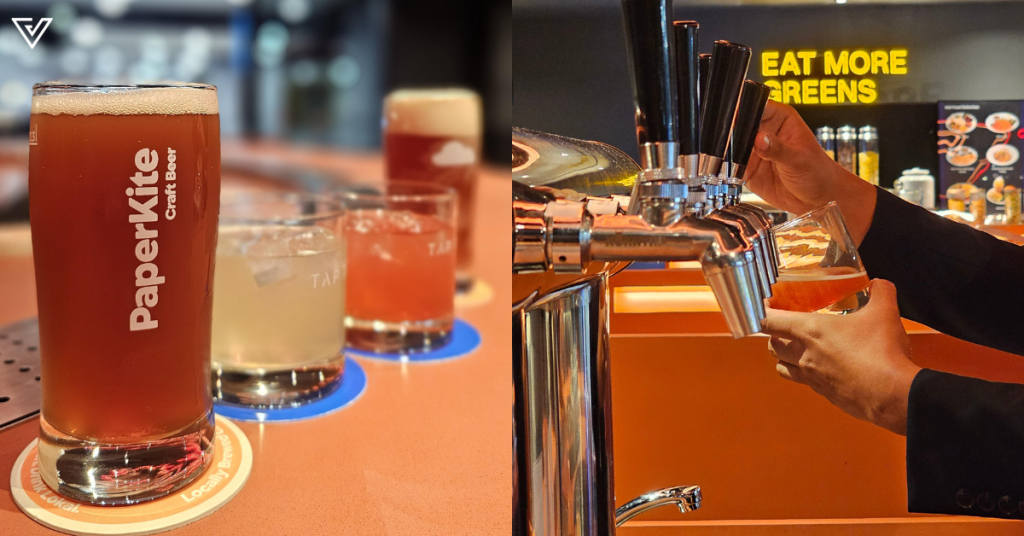
On that note, something we loved about MAX was the array of homegrown brands they feature. There were socks from Typical Us, notebooks from ana tomy, merch from APOM, and other cute localised offerings.
For business travellers, there are also three meeting rooms, two of which can be combined to make quite a spacious conference room. As for leisure guests, there’s a theatre room as well. But it only seats three, so if you’re looking to utilise it, be sure to call dibs.
Of course, if you want to stretch your legs and explore a bit, the surrounding airport terminal actually has a fair amount to offer, too. There’s the neighbouring Thai Odyssey massage parlour, as well as the Molly Fantasy arcade centre just across the way.
There’s a bunch of F&B spots too, from bakeries and cafes to local restaurants like Oriental Kopi and Thong Bowl. You can also shop a variety of local brands or even hit up a grocery store.
So, is it worth it?
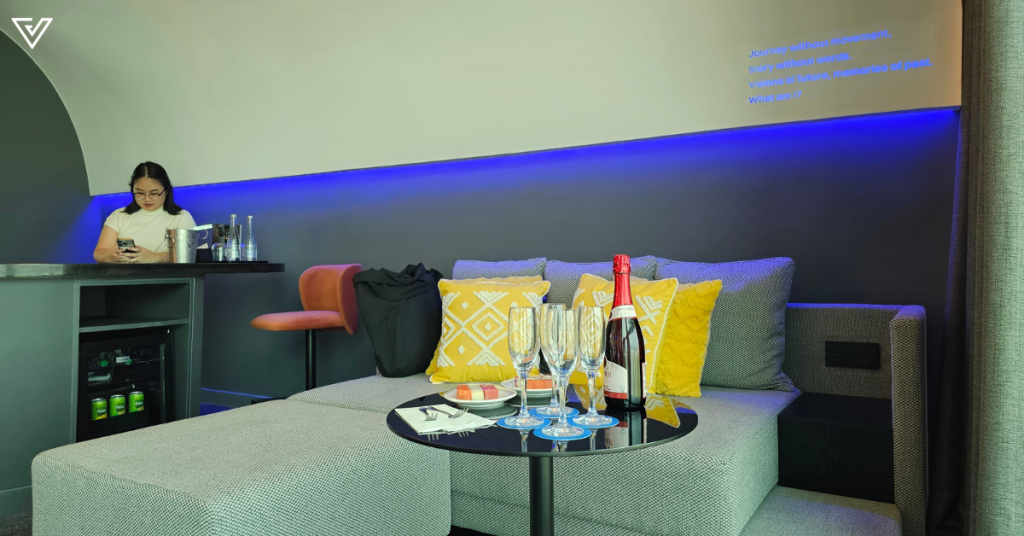
To be honest, it comes down to whether or not you’re someone who wants to thug it out before you get to your final travel destination, or if you’re someone who likes to indulge in the finer things in life.
Personally, I’m the former—I’ve once spent upward of 20 hours in the public waiting areas of an airport before due to flight complications.
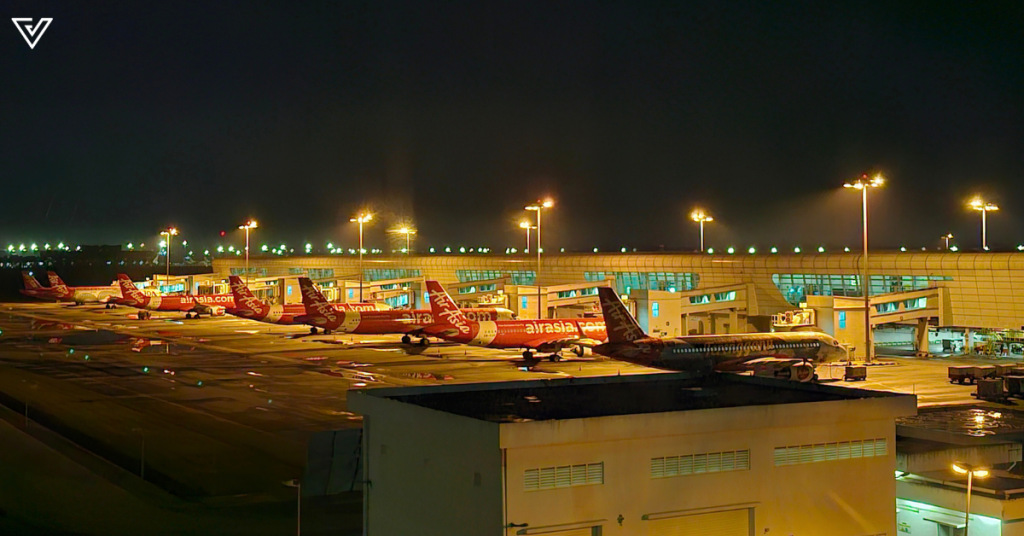
But while the Runway Suite might be a little much for me, I think that CapsuleTransit MAX’s lounge facilities and some of their more inexpensive rooms can be pretty worth it.
For those looking for a more budget stay, you have the options of CapsuleTransit’s other locations. The rooms at its KLIA2 Landside location start at around RM160+ for solo travellers.
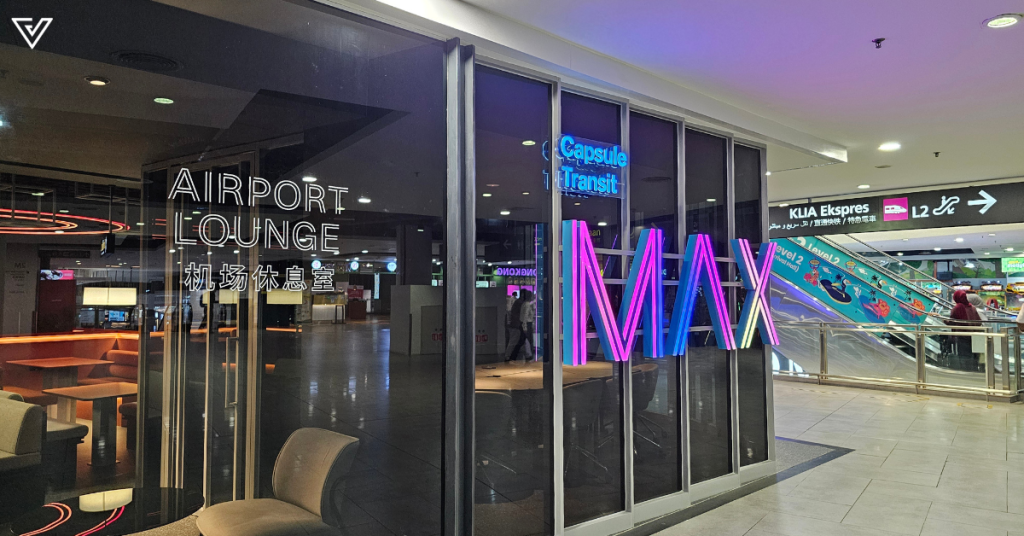
I don’t have much experience with airport hotels, but I would say CapsuleTransit MAX offered the basics of what a good hotel typically would, but with slightly fewer frills.
CapsuleTransit MAX is definitely a novelty that makes for a memorable experience. So, if you have the means, it’s a fun, comfortable stay while you wait for your flight.
| Room | Price (3 hours) | Price (6 hours) | Price (12 hours) | Price (1 night) |
|---|---|---|---|---|
| Deluxe Room | RM350 | RM400 | RM450 | RM550 |
| Executive Room | RM450 | RM500 | RM550 | RM650 |
| Family Room | RM550 | RM600 | RM650 | RM750 |
| Runway Suite | RM1,050 | RM1,250 | RM1,550 | RM2,050 |
Also Read: Sidec aims to nurture 300 startups and SMEs to grow Malaysia’s GDP, here’s the game plan
Featured Image Credit: Vulcan Post
This Frenchman expanded his vineyard biz into a KL bistro specialising in wine pairings
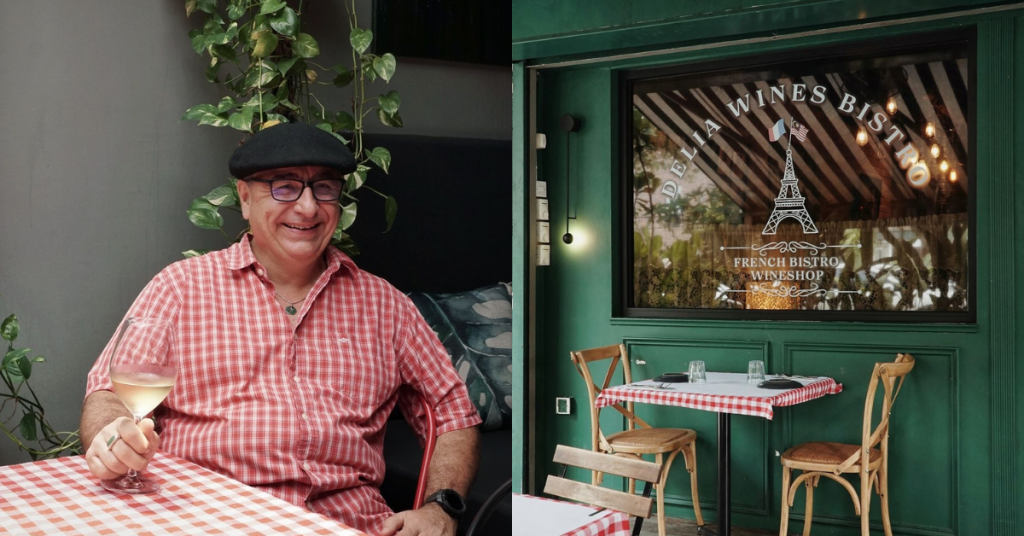
This might shock some of you, but not all French restaurants are fine dining restaurants.
Although French fine dining is certainly world renowned, the more laidback French bistros also have much to offer. And that bistrot culture is something that Delia Wines and Bistro in Kuala Lumpur aims to offer.
A legacy of wine
The man behind the business is Laurent Robert. Now 56 years old, Laurent has been living in Malaysia since 1997.
Before he delved into F&B, Laurent had worked in HVAC—heating, ventilation, and air conditioning. Specifically, he worked as a district cooling systems and equipment supplier covering the Asia Pacific area.
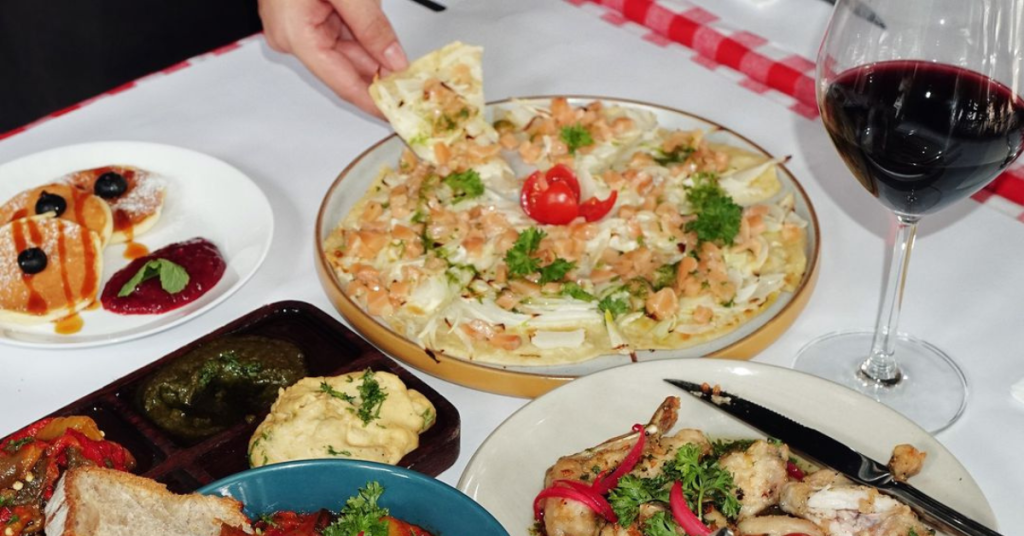
HVAC expert aside, though, Laurent is also the fourth-generation owner of The Robert Estate, a French vineyard founded in the 1900s.
The estate was created by his great grandparents, Juliette and Jules Robert, before World War I. Both of them were farmers, with grapes being one of the crops they farmed.
One week into the war, though, Jules passed away, leaving the estate with Juliette who took care of it and her three children.
Laurent’s parents eventually took over, but in 2011, they retired, passing the key of the estate to him and his brother.
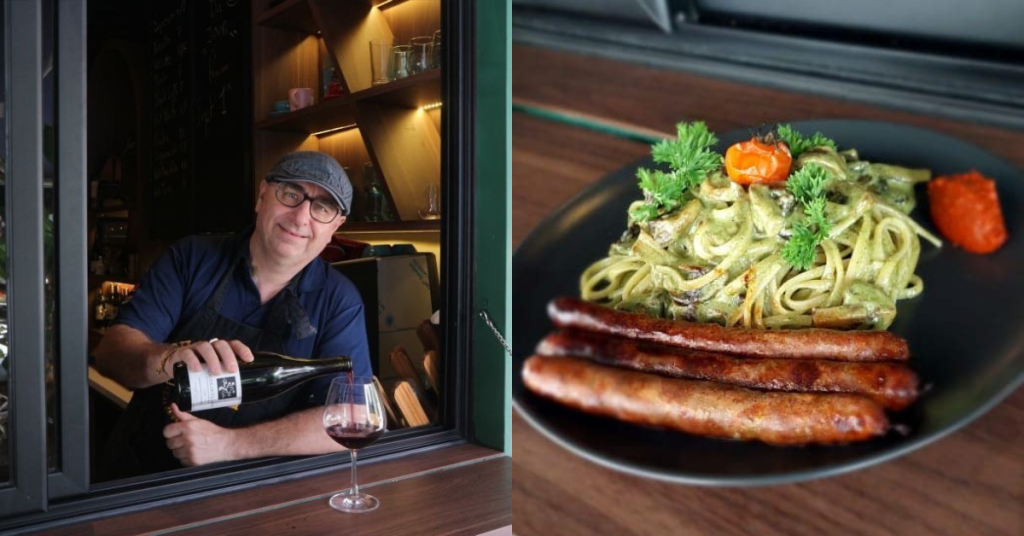
Today, Laurent’s brother is in charge of all mechanical works while he has employed a worker to take care of the vines while living in Malaysia.
Laurent often travels back to France as well. Just this year, he has travelled back four times, for both pleasure and business. His last visit was in September for holidaying and harvesting purposes.
Expanding from drinks to foods
Even before taking over the estate, Laurent had already been importing and dealing French boutique wines, including his father’s champagne brand.
In 2015, he decided to stop corporate businesses and concentrate more on promoting French wines.
To do that, Laurent decided to dabble in something tried and true—wine and food pairings. As a start, he began cooking from home, inviting his clientele to try the combinations.
“We were doing once a month, then once a week, and more and more [frequently],” he said. “So, it was time to stop cooking from home and move forward to open a restaurant.”
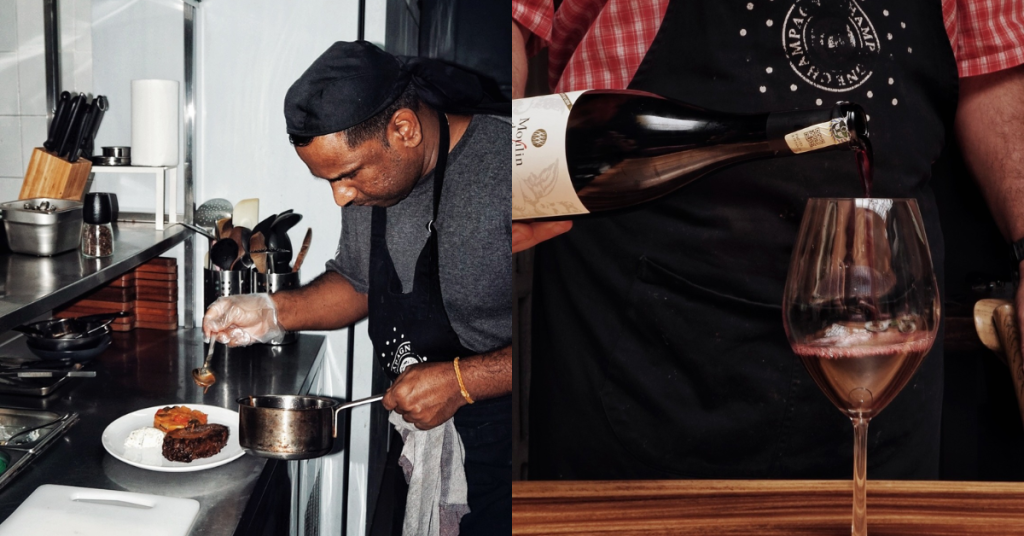
And that’s how Delia Wines and Bistro got its TTDI location in March 2020. That’s right, they set up shop right as the pandemic was happening.
“We could have stopped this project, but with our entrepreneurial passion, we kept going and re-opened in August 2020,” Laurent shared.
Not compromising French authenticity
Described as a “beloved character amongst oenophiles in KL” by The Yum List, Laurent has collected a database of wine lovers and thus customers for Delia Wines and Bistro.
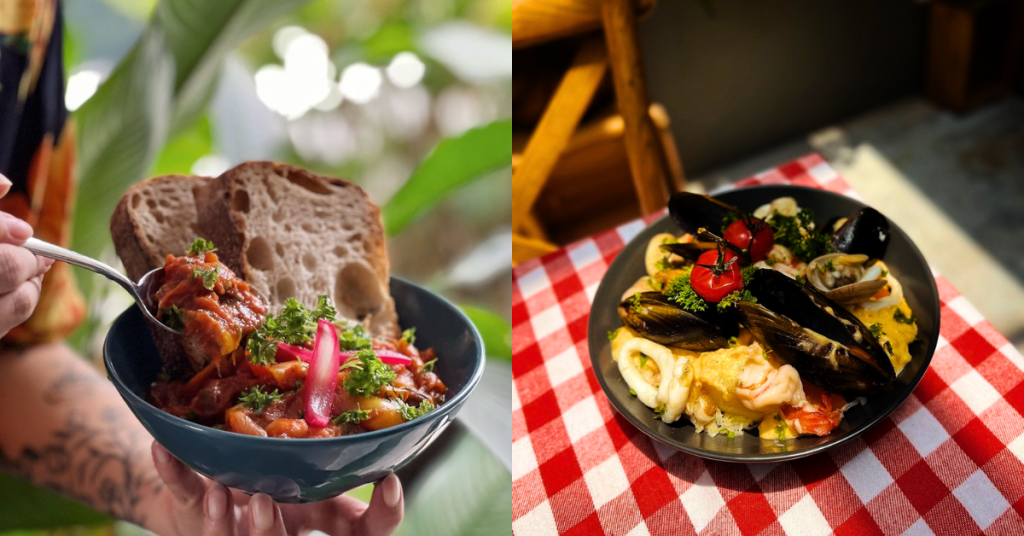
For a few years, the concept at Delia was to change up the menu as much as possible, and up till December 2023, they were changing the plat du jour (special of the day) weekly. Tuesday would be duck or game meat, Wednesday for beef, Thursday lamb, Friday for seafood, and poultry on Saturday, and Sunday oftentimes involved pork.
But now, the plat du jour is typically set monthly. Of course, specials aside, they also serve plenty of food a la carte.
As a French restaurant, Delia offers dishes like foie gras, escargot, frog legs, sweetbread, homemade black pudding, bavette a l’echalotte, and steak tartare—typical bistro foods found in France.
“I tried to cover as much as possible food from different parts of France,” Laurent shared.
Starting out, the food at Delia Wines and Bistro had been more of a complementary element to the wines. However, nowadays, Laurent believes that the food and the wines are both “on the same level”.
As he explained, “People can dine with us without consuming wines.”
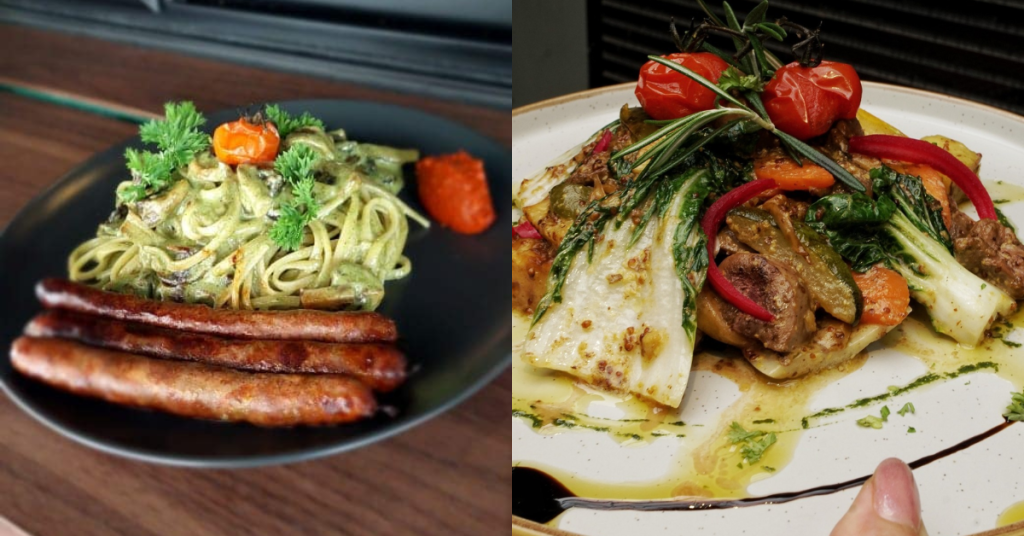
When asked about how he may have localised their menu to suit Malaysian taste buds, his answer was simple: “We did not.”
He elaborated, “I love the chilli padi and bunga katan in local cuisine, but for us at Delia Wines, we are more on butter and cream.”
Spreading good food and great wines
While the food portion of the business seems to have taken off with gourmands, Delia Wines is still a key part of the business as the importer and distributor of French and Italian wines. According to Laurent, they carry more than 110 references.
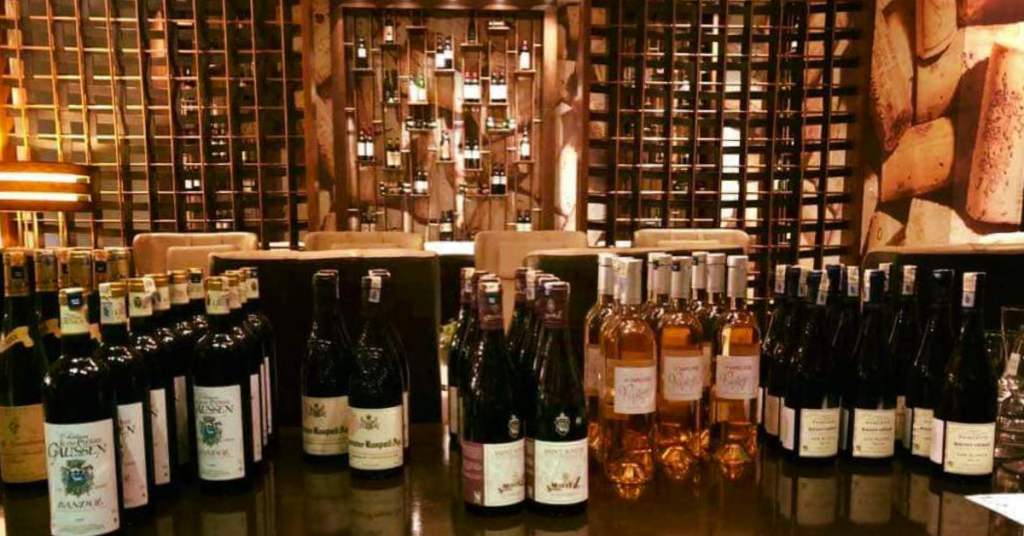
“I try to get wines by appellation in France to introduce to Malaysians different type of wines from different regions,” the owner said. “We have a lot, including white wines, champagne, rose, and red.”
To continue introducing their wines, the bistro hosts many relevant events. For instance, they organised an event on October 25 to celebrate World Champagne day with a six-course champagne pairing dinner.
Up next on November 21, they will host Beaujolais night (a sort of vineyard harvest festival), offering a buffet and Beaujolais wines.
“When we started, many curious customers were thinking French restaurant equals fine dining,” he said. “There are plenty of fine dining restaurant in Malaysia, [some with] Michelin recognition as well.”
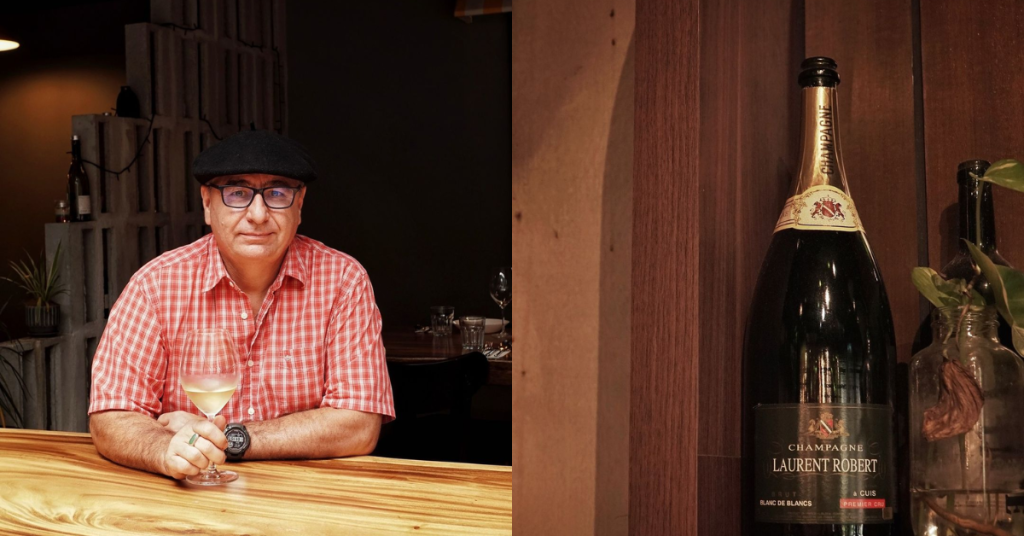
“We don’t have the vocation to go in this field,” Laurent said. “Remember I am a mechanical engineer and champagne estate owner.”
So, instead of fine dining-level cuisine, Laurent’s hope is that Delia will simply be known for its homecooked-style meals and good, convivial ambiance, all while introducing a great wine selection at good prices.
- Learn more about Delia Wines and Bistro here.
- Read other articles we’ve written about F&B businesses here.
Also Read: How this Malaysian SME overcame financial hurdles to grow their business with this 1 solution
Featured Image Credit: Delia Wines and Bistro
Nvidia is very undervalued even at its current US$3.5 trillion market cap, says Masayoshi Son

Disclaimer: Unless otherwise stated opinions expressed in the article belong solely to the author, who has no stake in any of the companies mentioned. It’s not meant to be investment advice and you should do your own research before you make any financial decisions.
Japan’s second wealthiest man and the CEO of SoftBank, Masayoshi Son, known for his bold tech investments (but also occasional stumbles) and opinions going against the grain, has just opined that Nvidia is still undervalued.
This is despite the company rebounding to nearly US$3.5 trillion, putting it marginally behind Apple among the world’s most valuable companies.
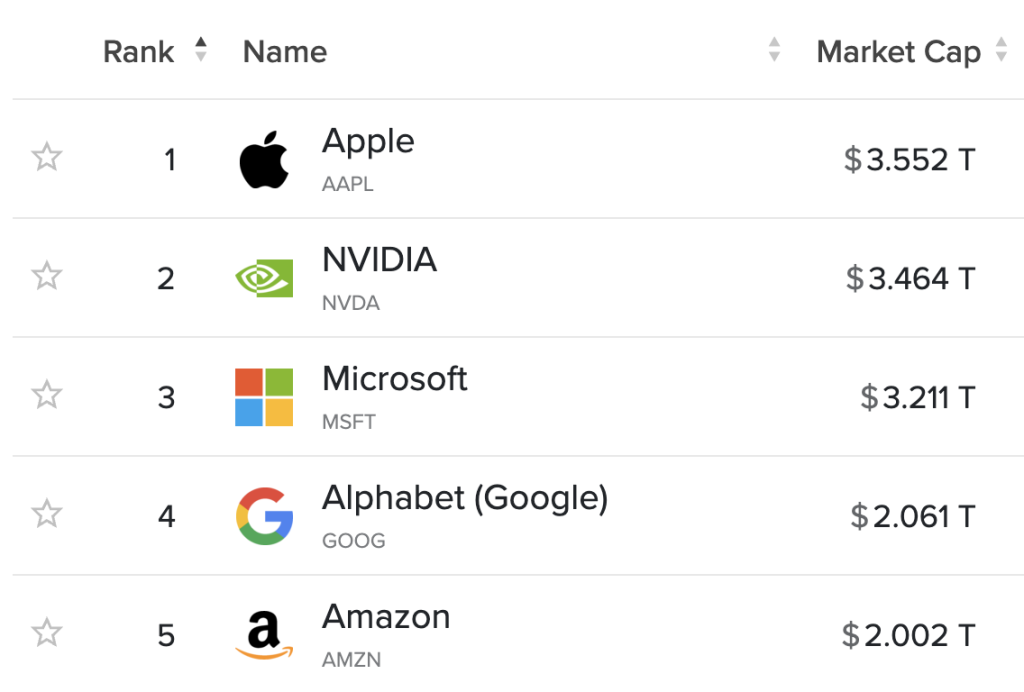
He voiced his observations yesterday during the Future Investment Initiative conference in Saudi Arabia, also known as the “Davos in the Desert”.
So, what are his predictions exactly?
9 trillion dollars
In response to the CNN’s Richard Quest’s question about the basis of his view, Son responded: “The future is much bigger.”
“What about the total generative AI future? What is the value of the future? […] Most negative guys say that AGI (Artificial General Intelligence), ASI (Artificial Super Intelligence) in 10 years, maybe only 5% of it [will be] actually useful. So I say: let’s accept the most negative critics’ view.”
Masayoshi Son
He then proceeded to explain that the costs of attaining AGI or ASI may require US$9 trillion dollars in capital expenditures on data centres, including as many as 200 million processing chips, as well as energy generation to power them.
“Small money.”
Masayoshi Son
This is because, even in the worst-case scenario, Son says, the 5% improvement is more than sufficient to justify the expense, since 5% of the global GDP in 10 years would be about… US$9 trillion dollars.
And that value becomes residual in the economy, so the world would recoup its entire AI investment in economic value generated in just one year — and then keep making it (and more) annually in the future.
The corporate profit from the returns on this investment could reach 50%, most of which will be, in Son’s view, collected by the top four companies in the business—an average of US$1 trillion in extra annual profit per business which, of course, includes Nvidia as the industry’s frontrunner.
The figure would absolutely dwarf the current trailing 12-month average of over US$50 billion that Nvidia is reporting today, even as it is likely to rise further next year, with the rollout of the new Blackwell products.

The unknowns
On the face of it, Son’s reasoning is pretty logical and straightforward. Since AI—especially advanced AGI or even ASI—is expected to transform virtually everything we do, it’s reasonable to expect it to raise our GDP globally and across different industries.
However, we cannot say quite the same when it comes to betting on specific businesses—as exhibited by Son himself.
In 2019, his Vision Fund sold its entire 4.9% stake in… Nvidia. Yes. It missed out on a US$170 billion share in the hottest business, selling it for pennies (even if it turned a profit at the time).
Hindsight is 20/20, as they say…
Moreover, as much as Jensen Huang’s behemoth is riding the AI wave today, the premium it puts on its chips, with AI cards costing as much as US$30,000 to US$40,000, is very painful to its customers who are devoting significant resources to finding alternatives which would reduce the expense.
One challenge comes from its rival in the GPU business, AMD, which is already selling its AI cards at a considerable discount, at around US$15,000 apiece (though they aren’t quite as capable yet).
But the ultimate goal for companies like OpenAI is to develop their own chips and become hardware independent:

This doesn’t necessarily mean Nvidia’s newfound cash cow is going to drop dead, but diversification would enable AI developers to bolster their bargaining power to get big discounts on chips that are currently in forever restricted supply.
After all, the Artificial Intelligence boom really only started two years ago, so forecasting what the market is going to look like a decade from now is really difficult.
While Nvidia is not going anywhere and is positioned to remain the market leader, the value it is able to extract as competition heats up can significantly decrease, reducing its financial performance and keeping a lid on its market capitalisation.
On the other hand, while AI companies are looking to enter Nvidia’s turf, Nvidia itself has launched its own AI model, becoming a competitor to its customers, before they can do the same to it on hardware.
So early into the race we can be certain of only one thing: that there’s a lot of money to be made in the AI business. As for who makes the most, however, that is a far tougher question to answer.
Also Read: Threat of losing your job to AI is finally real as Claude can now use a computer like a human
Featured Image Credit: FII Institute


